You are using an outdated browser. Please upgrade your browser to improve your experience.

How to Teach Creative Writing | 7 Steps to Get Students Wordsmithing

“I don’t have any ideas!”
“I can’t think of anything!”
While we see creative writing as a world of limitless imagination, our students often see an overwhelming desert of “no idea.”
But when you teach creative writing effectively, you’ll notice that every student is brimming over with ideas that just have to get out.
So what does teaching creative writing effectively look like?
We’ve outlined a seven-step method that will scaffold your students through each phase of the creative process from idea generation through to final edits.
7. Create inspiring and original prompts
Use the following formats to generate prompts that get students inspired:
- personal memories (“Write about a person who taught you an important lesson”)
- imaginative scenarios
- prompts based on a familiar mentor text (e.g. “Write an alternative ending to your favorite book”). These are especially useful for giving struggling students an easy starting point.
- lead-in sentences (“I looked in the mirror and I couldn’t believe my eyes. Somehow overnight I…”).
- fascinating or thought-provoking images with a directive (“Who do you think lives in this mountain cabin? Tell their story”).

Don’t have the time or stuck for ideas? Check out our list of 100 student writing prompts
6. unpack the prompts together.
Explicitly teach your students how to dig deeper into the prompt for engaging and original ideas.
Probing questions are an effective strategy for digging into a prompt. Take this one for example:
“I looked in the mirror and I couldn’t believe my eyes. Somehow overnight I…”
Ask “What questions need answering here?” The first thing students will want to know is:
What happened overnight?
No doubt they’ll be able to come up with plenty of zany answers to that question, but there’s another one they could ask to make things much more interesting:
Who might “I” be?
In this way, you subtly push students to go beyond the obvious and into more original and thoughtful territory. It’s even more useful with a deep prompt:
“Write a story where the main character starts to question something they’ve always believed.”
Here students could ask:
- What sorts of beliefs do people take for granted?
- What might make us question those beliefs?
- What happens when we question something we’ve always thought is true?
- How do we feel when we discover that something isn’t true?
Try splitting students into groups, having each group come up with probing questions for a prompt, and then discussing potential “answers” to these questions as a class.
The most important lesson at this point should be that good ideas take time to generate. So don’t rush this step!
5. Warm-up for writing
A quick warm-up activity will:
- allow students to see what their discussed ideas look like on paper
- help fix the “I don’t know how to start” problem
- warm up writing muscles quite literally (especially important for young learners who are still developing handwriting and fine motor skills).
Freewriting is a particularly effective warm-up. Give students 5–10 minutes to “dump” all their ideas for a prompt onto the page for without worrying about structure, spelling, or grammar.
After about five minutes you’ll notice them starting to get into the groove, and when you call time, they’ll have a better idea of what captures their interest.
Did you know? The Story Factory in Reading Eggs allows your students to write and publish their own storybooks using an easy step-by-step guide.

4. Start planning
Now it’s time for students to piece all these raw ideas together and generate a plan. This will synthesize disjointed ideas and give them a roadmap for the writing process.
Note: at this stage your strong writers might be more than ready to get started on a creative piece. If so, let them go for it – use planning for students who are still puzzling things out.
Here are four ideas for planning:
Graphic organisers
A graphic organiser will allow your students to plan out the overall structure of their writing. They’re also particularly useful in “chunking” the writing process, so students don’t see it as one big wall of text.
Storyboards and illustrations
These will engage your artistically-minded students and give greater depth to settings and characters. Just make sure that drawing doesn’t overshadow the writing process.
Voice recordings
If you have students who are hesitant to commit words to paper, tell them to think out loud and record it on their device. Often they’ll be surprised at how well their spoken words translate to the page.
Write a blurb
This takes a bit more explicit teaching, but it gets students to concisely summarize all their main ideas (without giving away spoilers). Look at some blurbs on the back of published books before getting them to write their own. Afterward they could test it out on a friend – based on the blurb, would they borrow it from the library?
3. Produce rough drafts
Warmed up and with a plan at the ready, your students are now ready to start wordsmithing. But before they start on a draft, remind them of what a draft is supposed to be:
- a work in progress.
Remind them that if they wait for the perfect words to come, they’ll end up with blank pages .
Instead, it’s time to take some writing risks and get messy. Encourage this by:
- demonstrating the writing process to students yourself
- taking the focus off spelling and grammar (during the drafting stage)
- providing meaningful and in-depth feedback (using words, not ticks!).

Reading Eggs also gives you access to an ever-expanding collection of over 3,500 online books!
2. share drafts for peer feedback.
Don’t saddle yourself with 30 drafts for marking. Peer assessment is a better (and less exhausting) way to ensure everyone receives the feedback they need.
Why? Because for something as personal as creative writing, feedback often translates better when it’s in the familiar and friendly language that only a peer can produce. Looking at each other’s work will also give students more ideas about how they can improve their own.
Scaffold peer feedback to ensure it’s constructive. The following methods work well:
Student rubrics
A simple rubric allows students to deliver more in-depth feedback than “It was pretty good.” The criteria will depend on what you are ultimately looking for, but students could assess each other’s:
- use of language.
Whatever you opt for, just make sure the language you use in the rubric is student-friendly.
Two positives and a focus area
Have students identify two things their peer did well, and one area that they could focus on further, then turn this into written feedback. Model the process for creating specific comments so you get something more constructive than “It was pretty good.” It helps to use stems such as:
I really liked this character because…
I found this idea interesting because it made me think…
I was a bit confused by…
I wonder why you… Maybe you could… instead.
1. The editing stage
Now that students have a draft and feedback, here’s where we teachers often tell them to “go over it” or “give it some final touches.”
But our students don’t always know how to edit.
Scaffold the process with questions that encourage students to think critically about their writing, such as:
- Are there any parts that would be confusing if I wasn’t there to explain them?
- Are there any parts that seem irrelevant to the rest?
- Which parts am I most uncertain about?
- Does the whole thing flow together, or are there parts that seem out of place?
- Are there places where I could have used a better word?
- Are there any grammatical or spelling errors I notice?
Key to this process is getting students to read their creative writing from start to finish .
Important note: if your students are using a word processor, show them where the spell-check is and how to use it. Sounds obvious, but in the age of autocorrect, many students simply don’t know.
A final word on teaching creative writing
Remember that the best writers write regularly.
Incorporate them into your lessons as often as possible, and soon enough, you’ll have just as much fun marking your students’ creative writing as they do producing it.
Need more help supporting your students’ writing?
Read up on how to get reluctant writers writing , strategies for supporting struggling secondary writers , or check out our huge list of writing prompts for kids .

Watch your students get excited about writing and publishing their own storybooks in the Story Factory
You might like....
- Create new account
- Reset your password
Register and get FREE resources and activities
Ready to unlock all our resources?
Creative writing techniques for kids: a step-by-step guide to writing a story

The way literacy is taught in primary schools has changed radically in the last couple of decades; when I was at school in the 80s we copied from blackboards, had whole hours of handwriting practice and sweated over spellings without any formal teaching of phonics whatsoever. While I think the more structured approach to literacy teaching we see in classrooms today makes learning more fun and accessible, my one worry is that there’s little time left for writing creatively.
When I was at school I adored writing stories – even stories with chapters and illustrations. I know my author brother did too – we found some of his old stories a few years back, and I felt so pleased he’d had the time to write these endless pages of action, adventure, characterisation and twisting plotlines.
As a primary teacher I ensured I would have a week each term when, during literacy sessions, we would focus solely on creating stories. I wasn’t deviating from the curriculum – far from it. During this week children would be consolidating their learning of phonics and be ‘writing for purpose’, considering carefully the aspects of story and who their audience might be.
It may very well be that your children write stories at home regardless of whether they’re required to for school, because most children have a seemingly natural urge to want to do so from time to time. This is just a little guidance on how you can support them and encourage a more structured approach to their story writing.
Plot planning
Firstly, ask your child where the story is going to take place . It could be somewhere fictional or real, it could be a planet, a country, a town or a house – anywhere!
Then, ask when the story is taking place – now? In the future? In the past?
Finally ask what they think is going to happen . Remember that this doesn’t have to be accurate and they don’t have to stick to what they say; many of the best writers say that their plots develop organically as they write. If they do have a firm idea of where they want to go with the plot, though, they can create an outline by completing a story planner, which could look something like this:
- And finally….
Download a FREE Creative Writing toolkit!
- KS1 & KS2 workbooks
- Bursting with fill-in prompt sheets and inspiring ideas
- Story structure tips, style guides and editing suggestions
Characterisation
Ask your child who is going to be in the story. How do they want their readers to feel about each character? Again, they may want to jot some ideas down. You could make a table for them to help them organise their thoughts, with these headings:
- Name of character
- Relationship to other characters
- What he/she looks like
Story language
Ask your child to think of some fabulous words to use in their story writing . They might be long words or simple ones, or they might be great descriptive words or words that help create pace and tension. Encourage them to jot these down and refer to the list as they write their story.
Story starters
All writers know that you’ve got to capture the attention of your readers right from the start; you want to make them desperate to read on. Ask your child to think of some good story openers that’ll entice people to find out more. Here are a few examples:
First sentences that are mysterious… Molly had no sense of the day that lay ahead.
Story starters that use language tricks like alliteration… It was damp, dark and dreadfully dusty when Molly entered the house.
Story openers that create tension… Molly could hear her heart beating faster than ever before. Could this really be happening?
Stories that go straight into dialogue… “But I don’t want to go to school, Mummy,” groaned Molly.
Encourage your child to look at some of the books they like to read and see how they begin in order to offer inspiration.
Get writing!
Once they’ve got all of these ideas in place, they can start writing. They could do a draft in the first instance and then a neat, polished version later. They may wish to write in short chapters, use illustrations, or make their own book to write in – let them use their imagination and creativity when it comes to presentation, and make sure you show how much you value the end product by keeping it to read again with the other books in your house.
If your child finds writing a story a little daunting, start with something small from our list of 9 fun writing projects to do with your children .
We also recommend the free art and creative writing challenges on the Night Zookeeper website ; your child will be contributing to a co-created animated television show.
You could also try a great story-making app and get your child writing fiction on their tablet!
Plus, find out how to support storytelling skills for children in EYFS , KS1 , KS2 and KS3 to get them thinking about story elements, plot and character development.

Give your child a headstart
- FREE articles & expert information
- FREE resources & activities
- FREE homework help
More like this

- PRO Courses Guides New Tech Help Pro Expert Videos About wikiHow Pro Upgrade Sign In
- EDIT Edit this Article
- EXPLORE Tech Help Pro About Us Random Article Quizzes Request a New Article Community Dashboard This Or That Game Popular Categories Arts and Entertainment Artwork Books Movies Computers and Electronics Computers Phone Skills Technology Hacks Health Men's Health Mental Health Women's Health Relationships Dating Love Relationship Issues Hobbies and Crafts Crafts Drawing Games Education & Communication Communication Skills Personal Development Studying Personal Care and Style Fashion Hair Care Personal Hygiene Youth Personal Care School Stuff Dating All Categories Arts and Entertainment Finance and Business Home and Garden Relationship Quizzes Cars & Other Vehicles Food and Entertaining Personal Care and Style Sports and Fitness Computers and Electronics Health Pets and Animals Travel Education & Communication Hobbies and Crafts Philosophy and Religion Work World Family Life Holidays and Traditions Relationships Youth
- Browse Articles
- Learn Something New
- Quizzes Hot
- This Or That Game New
- Train Your Brain
- Explore More
- Support wikiHow
- About wikiHow
- Log in / Sign up
- Education and Communications
- Writing Techniques
How to Teach Creative Writing
Last Updated: March 13, 2024 References
This article was co-authored by Christopher Taylor, PhD . Christopher Taylor is an Adjunct Assistant Professor of English at Austin Community College in Texas. He received his PhD in English Literature and Medieval Studies from the University of Texas at Austin in 2014. There are 13 references cited in this article, which can be found at the bottom of the page. This article has been viewed 117,099 times.
Creative writing is one of the most enjoyable types of writing for students. Not only does it allow students to explore their imaginations, but it helps them to structure their ideas and produce writing that they can be proud of. However, creative writing is a relatively difficult type of writing to teach and offers challenges to both new and seasoned teachers alike. Fortunately, though, with some work of their own, teachers can better develop their own abilities to teach creative writing.
Providing Students with the Fundamentals

- Theme. The theme of a story is its message or the main idea behind it.
- Setting. The setting of a story is the location or time it takes place in.
- Plot. The plot is the overall story, narrative, or sequence of events.
- Characterization. Characterization is how a character or person in a story is explained or presented to the reader.
- Conflict and dramatic action. Conflict and dramatic action are the main events of focus in the story. These events are often tense or exciting and are used to lure the reader in. [1] X Research source

- Explain how your students, as writers, can appeal to the humanity of their readers. One great way to do this is to ask them to explore character development. By developing the characters in their story, readers will become invested in the story.
- Discuss the triggers that engage readers in an effective story. Most great stories start with a problem, which is solved with the resolution, or conclusion of the story. Encourage students to create an engaging problem that will hook the readers in the first few pages of a short story or novel. [2] X Research source

- By setting the tone and atmosphere of a story, the author will establish his or her attitude to the subject and the feel of the story.
- Tone can be positive, neutral, or negative. [3] X Research source
- Atmosphere can be dark, happy, or neither.
- Descriptive words like “darkness” or “sunshine” can help set both the tone and atmosphere. [4] X Research source

- Active verbs are used to show action in the story.
- Active verbs are very often a better alternative to passive voice, as it keeps your writing clear and concise for your readers. [5] X Research source
- For example, instead of writing “The cat was chased by the dog” your student can write “The dog chased the cat.”
Guiding Students through the Process

- Tell your students to brainstorm about ideas they are truly interested in.
- If you must restrict the general topic, make sure that your students have a good amount of wiggle room within the broad topic of the assignment.
- Never assign specific topics and force students to write. This will undermine the entire process. [6] X Research source

- Letting your students know that the outline is non-binding. They don’t have to follow it in later steps of the writing process.
- Telling your students that the parts of their outline should be written very generally.
- Recommending that your students create several outlines, or outlines that go in different directions (in terms of plot and other elements of storytelling). The more avenues your students explore, the better. [7] X Research source

- Tell students that there is no “right” way to write a story.
- Let students know that their imaginations should guide their way.
- Show students examples of famous writing that breaks normal patterns, like the works of E.E. Cummings, William Faulkner, Charles Dickens, and William Shakespeare.
- Ask students to forget about any expectations they think you have for how a story should be written. [8] X Research source

- Gather the first drafts and comment on the student's work. For first drafts, you want to check on the overall structure of the draft, proper word use, punctuation, spelling, and overall cohesion of the piece. [9] X Research source
- Remind them that great writers usually wrote several drafts before they were happy with their stories.
- Avoid grading drafts for anything other than completion.

- Let students pair off to edit each others' papers.
- Have your students join groups of 3 or 4 and ask them to go edit and provide feedback on each member’s story.
- Provide guidance so students contribute constructively to the group discussion. [10] X Research source

- Reward your students if they are innovative or do something unique and truly creative.
- Avoid evaluating your students based on a formula.
- Assess and review your own standards as often as you can. Remember that the point is to encourage your students' creativity. [11] X Research source
Spurring Creativity

- Teach your students about a variety of writers and genres.
- Have your students read examples of different genres.
- Promote a discussion within your class of the importance of studying literature.
- Ask students to consider the many ways literature improves the world and asks individuals to think about their own lives. [12] X Research source

- Make sure your room is stocked with a wide variety of fiction stories.
- Make sure your room is stocked with plenty of paper for your students to write on.
- Line up other writing teachers or bring in writers from the community to talk to and encourage your students.

- Cut out pictures and photographs from magazines, comic books, and newspapers.
- Have your students cut out photographs and pictures and contribute them to your bank.
- Consider having your students randomly draw a given number of photos and pictures and writing a short story based on what they draw.
- This technique can help students overcome writer's block and inspire students who think that they're "not creative." [13] X Research source

- Pair your students with students from another grade in your school.
- Allow your students to write stories that younger students in your school would like to read.
- Pair your students with another student in the class and have them evaluate each others' work. [14] X Research source

- If you just have a typical classroom to work with, make sure to put inspirational posters or other pictures on the walls.
- Open any curtains so students can see outside.
- If you have the luxury of having an extra classroom or subdividing your own classroom, create a comfortable space with a lot of inspirational visuals.
- Writing spaces can help break writer's block and inspire students who think that they're "not creative." [15] X Research source

- Involve students in the printing process.
- Publication does not have to be expensive or glossy.
- Copies can be made in the school workroom if possible or each student might provide a copy for the others in the group.
- A collection of the stories can be bound with a simple stapler or brads.
- Seek out other opportunities for your students to publish their stories.
Expert Q&A

You Might Also Like

- ↑ https://www.writersonlineworkshops.com/courses/creative-writing-101
- ↑ https://kobowritinglife.com/2012/10/14/six-tips-for-engaging-readers-within-two-seconds-the-hook-in-fiction-and-memoir/
- ↑ https://www.dailywritingtips.com/in-writing-tone-is-the-author%E2%80%99s-attitude/
- ↑ http://ourenglishclass.net/class-notes/writing/the-writing-process/craft/tone-and-mood/
- ↑ https://owl.english.purdue.edu/owl/resource/539/02/
- ↑ http://www.alfiekohn.org/article/choices-children/
- ↑ https://www.writersdigest.com/write-better-fiction/7-steps-to-creating-a-flexible-outline-for-any-story
- ↑ http://thewritepractice.com/the-formula-to-write-a-novel/
- ↑ https://student.unsw.edu.au/editing-your-essay
- ↑ http://orelt.col.org/module/unit/5-promoting-creative-writing
- ↑ http://education.seattlepi.com/grade-creative-writing-paper-3698.html
- ↑ http://www.theatlantic.com/education/archive/2016/04/educating-teenagers-emotions-through-literature/476790/
- ↑ http://www.wrightingwords.com/for-teachers/5-tips-for-teaching-creative-writing/
About This Article

To teach creative writing, start by introducing your students to the core elements of storytelling, like theme, setting, and plot, while reminding them that there’s no formula for combining these elements to create a story. Additionally, explain how important it is to use tone and atmosphere, along with active verbs, to write compelling stories that come alive. When your students have chosen their topics, have them create story outlines before they begin writing. Then, read their rough drafts and provide feedback to keep them on the right path to storytelling success. For tips from our English reviewer on how to spur creativity in your students, read on! Did this summary help you? Yes No
- Send fan mail to authors
Reader Success Stories
Yunzhe Yang
Mar 27, 2017
Did this article help you?

Daniel Hesse
Dec 5, 2016

Featured Articles

Trending Articles

Watch Articles

- Terms of Use
- Privacy Policy
- Do Not Sell or Share My Info
- Not Selling Info
Get all the best how-tos!
Sign up for wikiHow's weekly email newsletter

Inspiring Ink: Expert Tips on How to Teach Creative Writing
The world of creative writing is as vast as it is rewarding. It’s a form of expression that allows the writer to explore different worlds, characters, and narratives – all within the power of their pen.
But what exactly is creative writing and why is it important? Let’s explore the value of creative writing and how to inspire young (or old!) minds to embark on the curious and exciting journey of writing creatively – it’s easier than you think!
What is Creative Writing?
Creative writing, in its simplest form, is writing that goes beyond the bounds of normal professional, journalistic, academic, or technical forms of literature.
It’s characterized by its emphasis on:
- narrative craft
- character development
- the use of literary devices
From poetry to plays, scripts to sonnets, creative writing covers a wide range of genres . It’s about painting pictures with words, invoking emotions, and bringing ideas to life . It’s about crafting stories that are compelling, engaging, and thought-provoking.
Whether you’re penning a novel or jotting down a journal entry, creative writing encourages you to unleash your imagination and express your thoughts in a unique, artistic way. For a deeper dive into the realm of creative writing, you can visit our article on what is creative writing .
Benefits of Developing Creative Writing Skills
The benefits of creative writing extend beyond the page.
It’s not just about creating captivating stories or crafting beautiful prose. The skills developed through creative writing are invaluable in many aspects of life and work.
1. Creative writing fosters creativity and imagination.
It encourages you to think outside the box, broaden your perspective, and explore new ideas. It also enhances your ability to communicate effectively, as it involves conveying thoughts, emotions, and narratives in a clear and compelling manner.
2. Creative writing aids in improving critical thinking skills.
It prompts you to analyze characters, plotlines, and themes, and make connections between different ideas. This process activates different parts of the mind, drawing on personal experiences, the imagination, logical plot development, and emotional intelligence.
3. Creative writing is also a valuable tool for self-expression and personal growth.
It allows you to explore your feelings, experiences, and observations, providing an outlet for self-reflection and introspection. By both reading and writing about different characters in different situations, readers develop empathy in a gentle but effective way.
4. Creative writing skills can open up a host of career opportunities.
From authors and editors to content creators and copywriters, the demand for creative writers is vast and varied. You can learn more about potential career paths in our article on creative writing jobs and what you can do with a creative writing degree .
In essence, creative writing is more than just an art—it’s a skill, a craft, and a powerful tool for communication and self-expression. Whether you’re teaching creative writing or learning it, understanding its value is the first step towards mastering the art.
The 3 Roles of a Creative Writing Teacher
Amongst the many facets of a creative writing teacher’s role, three vital aspects stand out: inspiring creativity , nurturing talent , and providing constructive criticism . These elements play a significant role in shaping budding writers and fostering their passion for the craft.
1. Inspiring Creativity
The primary function of a creative writing teacher is to inspire creativity.
They must foster an environment that encourages students to think outside the box and explore new possibilities . This includes presenting students with creative writing prompts that challenge their thinking, promoting lively discussions around various topics, and providing opportunities for students to engage in creative writing activities for kids .
Teachers should also expose students to a range of literary genres , styles, and techniques to broaden their understanding and appreciation of the craft. This exposure not only enhances their knowledge but also stimulates their creativity, encouraging them to experiment with different writing styles .
2. Nurturing Talent
Nurturing talent involves recognizing the unique abilities of each student and providing the necessary support and guidance to help them develop these skills. A creative writing teacher needs to identify the strengths and weaknesses of each student and tailor their approach accordingly.
This means:
- offering personalized feedback
- setting realistic yet challenging goals
- providing opportunities for students to showcase their work
Encouraging students to participate in writing competitions or to publish their work can give them a confidence boost and motivate them to improve. Furthermore, teachers should educate students about various creative writing jobs and what you can do with a creative writing degree . This knowledge can inspire students to pursue their passion for writing and explore career opportunities in the field.
3. Providing Constructive Criticism
Providing constructive criticism is a critical aspect of teaching creative writing. It involves assessing students’ work objectively and providing feedback that helps them improve .
Teachers should:
- highlight the strengths of the work
- address the areas that need improvement
- suggest ways to make the piece better
Constructive criticism should be specific, actionable, and encouraging . It’s important to remember that the goal is to help the student improve, not to discourage them. Therefore, teachers need to communicate their feedback in a respectful and supportive manner.
In essence, a teacher’s role in teaching creative writing extends beyond mere instruction. They are mentors who inspire, nurture, and shape the minds of budding writers. By fostering a supportive and stimulating environment, they can help students unlock their creative potential and develop a lifelong love for writing.
3 Techniques for Teaching Creative Writing
When it comes to understanding how to teach creative writing, there are several effective techniques that can help inspire students and foster their writing skills.
1. Encouraging Free Writing Exercises
Free writing is a technique that encourages students to write continuously for a set amount of time without worrying about grammar, punctuation, or topic. This type of exercise can help unleash creativity, as it allows students to freely express their thoughts and ideas without judgment or constraint.
As a teacher, you can set a specific theme or provide creative writing prompts to guide the writing session. Alternatively, you can allow students to write about any topic that comes to mind. The key is to create an environment that encourages creative exploration and expression.
2. Exploring Different Genres
Another effective technique is to expose students to a wide range of writing genres. This can include fiction, non-fiction, poetry, drama, fantasy, mystery, and more. By exploring different genres, students can discover their unique writing styles and interests. This variety also offers the chance to expand their writing skills and apply them to various writing formats.
To facilitate this exploration, you can assign writing projects in different genres, conduct genre-specific writing workshops, or invite guest speakers who specialize in different genres. You can also encourage students to critically analyze how different authors approach their work.
3. Analyzing Published Works
Analyzing published works is a powerful way to teach creative writing. This technique allows students to learn from established authors by studying their:
- writing styles
- narrative structures
- use of language.
It also provides a practical context for understanding writing concepts and techniques.
As a teacher, you can select diverse pieces of literature for analysis , ranging from classic novels to contemporary short stories. Encourage students to identify elements they admire in these works and discuss how they can incorporate similar techniques into their own writing.
These techniques for teaching creative writing are effective ways to inspire creativity, encourage self-expression, and develop writing skills. As a teacher, your role is crucial in guiding students through their creative journey and helping them realize their potential as writers.
Creative Writing Workshops and Exercises
One effective method on how to teach creative writing is through the use of targeted workshops and exercises. These interactive sessions can stimulate creativity, foster character development , and help in understanding story structures .
Idea Generation Workshops
Idea generation is a crucial aspect of creative writing. It is the starting point that provides a springboard for writers to explore and develop their narratives. Idea generation workshops can be an interactive and fun way to help writers come up with fresh ideas.
Workshops can include brainstorming sessions , where writers are encouraged to think freely and note down all ideas, no matter how unconventional they may seem. Another method is the use of writing prompts , which can serve as a creative spark.
A prompt could be:
- even an image
Editor’s Note : Encourage children to create a big scribble on a scrap piece of paper and then look for an image in it (like looking for pictures in the clouds). This can be a great creative writing prompt and students will love sharing their writing with each other! Expect lots of giggles and fun!
Character Development Exercises
Characters are the heart of any story. They drive the narrative and engage the readers. Character development exercises can help writers create well-rounded and relatable characters.
Such exercises can include character questionnaires , where writers answer a series of questions about their characters to gain a deeper understanding of their personalities, backgrounds, and motivations. Role-playing activities can also be useful, allowing writers to step into their characters’ shoes and explore their reactions in different scenarios.
Story Structure Workshops
Understanding story structure is vital for creating a compelling narrative. Story structure workshops can guide writers on how to effectively structure their stories to engage readers from start to finish .
These workshops can cover essential elements of story structures like:
- rising action
- falling action
In addition to understanding the basics, writers should be encouraged to experiment with different story structures to find what works best for their narrative style. An understanding of story structure can also help in analyzing and learning from published works .
Providing writers with the right tools and techniques, through workshops and exercises, can significantly improve their creative writing skills. It’s important to remember that creativity flourishes with practice and patience .
As a teacher, nurturing this process is one of the most rewarding aspects of teaching creative writing. For more insights and tips on teaching creative writing, continue exploring our articles on creative writing .
Tips to Enhance Creative Writing Skills
The process of teaching creative writing is as much about honing one’s own skills as it is about imparting knowledge to others. Here are some key strategies that can help in enhancing your creative writing abilities and make your teaching methods more effective.
Regular Practice
Like any other skill, creative writing requires regular practice . Foster the habit of writing daily, even if it’s just a few lines. This will help you stay in touch with your creative side and continually improve your writing skills. Encourage your students to do the same.
Introduce them to various creative writing prompts to stimulate their imagination and make their writing practice more engaging.
Reading Widely
Reading is an essential part of becoming a better writer. By reading widely, you expose yourself to a variety of styles, tones, and genres . This not only broadens your literary horizons but also provides a wealth of ideas for your own writing.
Encourage your students to read extensively as well. Analyzing and discussing different works can be an excellent learning exercise and can spark creative ideas .
Exploring Various Writing Styles
The beauty of creative writing lies in its diversity. From poetic verses to gripping narratives, there’s a wide range of styles to explore. Encourage your students to try their hand at different forms of writing. This not only enhances their versatility but also helps them discover their unique voice as a writer.
To help them get started, you can introduce a variety of creative writing activities for kids . These tasks can be tailored to suit different age groups and proficiency levels. Remember, the goal is to foster a love for writing, so keep the activities fun and engaging .
Have Fun Teaching Creative Writing!
Enhancing creative writing skills is a continuous journey. It requires persistence, curiosity, and a willingness to step out of your comfort zone. As a teacher, your role is to guide your students on this journey, providing them with the tools and encouragement they need to flourish as writers – and most of all – enjoy the process!
For more insights on creative writing, be sure to explore our articles on what is creative writing and creative writing jobs and what you can do with a creative writing degree .
Brooks Manley

Creative Primer is a resource on all things journaling, creativity, and productivity. We’ll help you produce better ideas, get more done, and live a more effective life.
My name is Brooks. I do a ton of journaling, like to think I’m a creative (jury’s out), and spend a lot of time thinking about productivity. I hope these resources and product recommendations serve you well. Reach out if you ever want to chat or let me know about a journal I need to check out!
Here’s my favorite journal for 2024:

Gratitude Journal Prompts Mindfulness Journal Prompts Journal Prompts for Anxiety Reflective Journal Prompts Healing Journal Prompts Cognitive Behavioral Therapy Journal Prompts Mental Health Journal Prompts ASMR Journal Prompts Manifestation Journal Prompts Self-Care Journal Prompts Morning Journal Prompts Evening Journal Prompts Self-Improvement Journal Prompts Creative Writing Journal Prompts Dream Journal Prompts Relationship Journal Prompts "What If" Journal Prompts New Year Journal Prompts Shadow Work Journal Prompts Journal Prompts for Overcoming Fear Journal Prompts for Dealing with Loss Journal Prompts for Discerning and Decision Making Travel Journal Prompts Fun Journal Prompts
Enriching Creative Writing Activities for Kids
You may also like, planner review: the clever fox planner pro.
Is a Degree in Creative Writing Worth it?
How to start and keep a bullet journal: a beginner’s guide, leave a reply cancel reply.
Save my name, email, and website in this browser for the next time I comment.
- Productivity
- Favorite Journals
- How to write a story
- How to write a novel
- How to write poetry
- Dramatic writing
- How to write a memoir
- How to write a mystery
- Creative journaling
- Publishing advice
- Story starters
- Poetry prompts
- For teachers
How to Teach Writing - Resources for Creative Writing Teachers
Fiction writing course syllabus with lesson plans, fiction writing exercises and worksheets, resources for teaching introductory poetry writing, resources for teaching children.

How to teach writing - general thoughts
- help students to understand the elements of craft (e.g., story structure, poetic meter, etc.) so that they can recognize them in their reading and consciously experiment with them in their writing.
- open students' eyes to the options available to them when they write a story or poem (e.g., "showing" instead of "telling", using different kinds of narrators and narrative viewpoints, using different poetic forms).
- encourage students to become close observers of the world around them and to find creative material in their environments.
- teach students the value of specificity, of using all five senses to discover details that may not be obvious to the casual observer.
- help students to separate the processes of writing and editing, to avoid self-criticism while writing their rough drafts to allow ideas to flow freely (for this to work, their teachers also have to avoid criticizing rough drafts!). Teach students to treat self-editing as a separate stage in the writing process.
- get students reading in the genre they'll be writing; e.g., if they're writing poetry, encourage them to read a lot of poems.
- help students learn to trust their own perspectives and observations, to believe that they have something interesting to say.
- teach students not to wait for inspiration, that they can write even when not inspired.
- get students excited about writing!
© 2009-2024 William Victor, S.L., All Rights Reserved.
Terms - Returns & Cancellations - Affiliate Disclosure - Privacy Policy
How to Effectively Teach Creative Writing in Elementary
Today let’s discuss how to effectively teach creative writing at the elementary level. Creative writing is such an important writing skill to teach students from a young age. Young writers need to understand the concept of creative writing as using their imagination to express themselves freely through words.
It’s not just about proper grammar and spelling (though those are important too!) , but rather about sparking their creativity , allowing them to dream up unique characters , exciting adventures, and incredible worlds. By nurturing their storytelling abilities early on, we’re not just helping them become better writers, but also fostering their confidence, encouraging self-expression, and igniting a lifelong love for writing. So, let’s dive into some strategies and tips to make your creative writing lesson plans a hit in your elementary classroom!

What is Creative Writing?
Creative writing is essentially writing in which the author uses his or her imagination to create a story. Creative writing in simple terms refers to the process of expressing thoughts, ideas and stories in a unique and imaginative way.
It’s about letting children’s minds wander freely, encouraging them to use their imagination to create characters, settings, and plots. Creative writing isn’t just about grammar and spelling; it’s about fostering a love for storytelling, allowing kids to explore their creativity, and helping them find their voice through words on paper. It’s a journey that encourages self-expression, builds confidence, and nurtures a lifelong appreciation for writing. The whole purpose of creative writing is to think outside the box and stray from traditional structures and norms.
Creative writing falls under one of the 5 categories of writing but it also combines a lot of these styles together:
- Narrative Writing
- Descriptive Writing
- Persuasive Writing
- Expository Writing
- Creative Writing
Creative Writing Lesson Plans Don’t Have to Be Difficult
Finding creative ways for students to write using their imaginations doesn’t have to be difficult. No matter the grade level, creative writing lessons should offer plenty of opportunities for students to tell their point of view on a subject. Don’t let creating lesson plans for creative writing be a headache! It’s all about giving kids the chance to let loose and share their thoughts in their own special way.
Whether they’re in 2nd grade, 3rd grade, or 5th grade, the key is to let their imagination run wild. Get them talking about what interests them, throw in some fun prompts, and watch the magic happen! Mix things up with different writing styles – stories, poems, even real-life tales. Make it a safe space where they feel free to jot down whatever comes to mind. By balancing a bit of structure with loads of creative freedom, teaching creative writing becomes a blast for both the teachers and the students!

Here’s How to Teach a Creative Writing Activity to Elementary Students:
1. start with creative writing prompts.
One of the first activities you can try is using writing prompts with students. Writing prompts are a great tool to get students’ brain juices flowing, no matter if they are elementary, middle school, or high school students! Coming up with writing topics for younger students can be especially challenging sometimes.
Inside the How to Write a Paragraph Year-Long Bundle there are specific writing prompts that are scaffolded and differentiated to meet all learner’s needs. You will find everything you need inside this resource to help your students who struggle with writing understand how to write a paragraph all YEAR LONG … trust us! It allows for easy planning for your writing lessons because it’s got different seasonal writing resources and prompts inside no matter what time of year it is. These are the perfect place to start to get your students writing based on themes.
Once they are comfortable in this category, then it’s time to actually get them to come up with some of their own ideas to write about now (after all that is the ENTIRE point of a creative writing lesson!)
Try with these juicy writing prompts below to help get your student’s creativity flowing if they need help coming up with a topic to write about :
- Personal memories: “Tell about someone who taught you something really important.”
- Imaginative scenarios: “Let’s create a wild story set in a world where anything goes!”
- Prompts based on a familiar mentor text: “What if your favorite book ended differently? Give it a new twist!”
- Lead-in sentences: “I saw myself in the mirror and couldn’t believe what I saw. Overnight, I…”
- Fascinating or thought-provoking images with a directive: “Who do you think calls this log cabin home? Tell us their story and what they’re up to!”
2. Break Down the Prompts Together
Do NOT rush this next step! We need to make sure our students are coming up with unique and creative writing ideas. During this first week’s lesson plan, you want to make sure students know exactly what they are getting themselves into with the creative writing process. Make it known that these prompts above are to help guide them and their imagination. Help to break down what each prompt is asking/ looking for:
For example, if the prompt says “I saw myself in the mirror and couldn’t believe what I saw. Overnight, I…,” then what questions should the students be asking?
Hopefully, they will tell you they want to know what they look like in the mirror right now.
Then you can have students think of 5 possible situations for what happened and how they look.
3. Do a 5 Minute “Free Write Brain Dump”
During the next step of a creative writing lesson plan, encourage students to do a brain dump in their writing journals on all of their prior knowledge on the subject that they will be writing about. This lets you know a couple of things as the teacher: Do they have their own experience on this topic and enough background knowledge? Does the subject areas that they are free-writing about make sense for the creative writing topic? This should only take about 5 minutes and you are NOT worried about spelling or grammar during this step.
For example: if they are planning to write about the solar system but they don’t have much to say during this free write brain dump, this is where you may want to incorporate a mini lesson or guided conference with you to make sure they are picking a topic that they have a lot of background knowledge about or can at least figure out where to find the answers they might need for their writing.
The “free write brain dump” is helpful for students to see a couple of things- okay I know enough information about this topic and am ready to organize my thoughts OR I had a hard time just coming up with random thoughts to write about…maybe I need a need a new topic. It will truly help decide their confidence factor for this assignment.

4. Start Your Planning Process
The next step in your creative writing unit should be having students take their decided-upon creative writing topic and organize their thoughts and ideas. This step is super important because you want the information to be in the students’ own writing but you also want to make sure they have a plan for how to get their point across. Your stronger writers may be ready to go but some may need a bit more structure set up to help them.
There are a couple of different ways they can organize their ideas:
Use Graphic Organizers
Graphic organizers are the perfect thing to use if students want to stick with a paragraph-type writing structure. For your lower writers, this might be the way to go because graphic organizers make planning a lot easier and the structure makes it super easy to follow. Graphic organizers also help break down the writing process into chunks so it doesn’t feel like such a difficult task to students who may struggle more with their writing skills or for ESL students.
Character Development Worksheets
Provide worksheets that prompt students to describe the characters in detail that they want in their story. Include sections for physical appearance, personality traits, motivations, and character arcs. This helps students develop well-rounded characters before they start writing.
Peer Brainstorming
Organize small group brainstorming sessions where students can share their ideas and receive feedback from their peers. This way can totally help students polish up their ideas and come up with fresh new ones for their creative writing.

Story Boarding
Encourage students to create a visual storyboard for their story. They can draw a series of pictures or scenes that outline the plot, helping them visualize the sequence of events in their narrative. We really love this idea for planning for students who are learning English as a second language and students who have more difficulties communicating their thoughts out loud.
Voice Recording
Finally, one last idea: If your students are feeling unsure about writing things down, suggest they talk it out and record their thoughts on a device such as a classroom iPad.
They might be amazed at how easily their spoken words turn into great written stuff on the page! This is another favorite of ours for those students who struggle with getting their thoughts on paper or are learning English as a second language.
During the planning phase , it is a good time to take the opportunity to do any mini lessons you feel needed with students on any of the skills above.
5. Write the Rough Draft
Next is taking the creative narrative and putting it into a rough draft version using their planning method. It’s time for them to start coming up with their own creative short story. Do they have a main character? Is there a problem and solution? Does the writing make sense? After the rough draft, it can be super beneficial to meet with students individually or in small groups to give feedback before they move forward on the final copy.
Word of advice: Don’t worry about spelling or grammar too much in the rough draft phase! Just help students get their thoughts out onto paper!
6. Time To Write the Final Draft
As the creative writing journey nears its conclusion, it’s time to guide your students toward the crucial phase of crafting their final drafts. This stage marks a shift towards independent work, where students take ownership of refining their narratives. Encourage them to enrich their stories with vibrant sensory details to help bring the writing to life.
This isn’t just about polishing; it’s about infusing their words with emotions and imagination. The final draft represents all of their hard work! Make sure you help them reach their fullest potential with their creative writing and storytelling skills!
A Final Word on Teaching Creative Writing to Elementary Students
When planning your creative writing lesson plans for the school year, it’s best to think about the overall entire writing process. For students that you KNOW creative writing will be a challenge for, take some time during English language arts sessions and work with them on the simple structures of writing to help build their confidence. If they struggle with the mechanics and confidence to write, they honestly may not be ready for the creative writing process just yet. Use the resource below to help them refine their writing skills so that all of your students can be a confident and creative writer!

How do you feel about creative writing lesson plans?
You might also like:.
FREE Differentiated Creative Writing Prompts for Fall
Excuse our digital dust! We’re busy renovating this website to make it even more fabulous. Stay tuned!
- Read more about: Writing
You might also like...
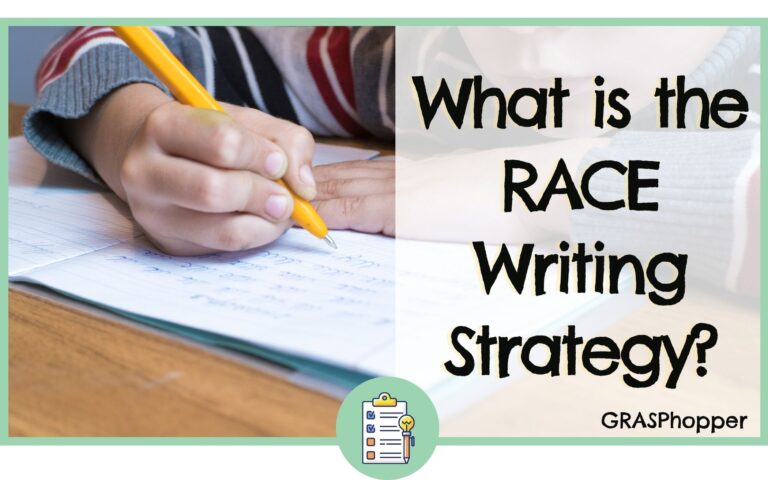
What is the RACE Writing Strategy?

The Best Paragraph Writing Worksheets for 5th Grade
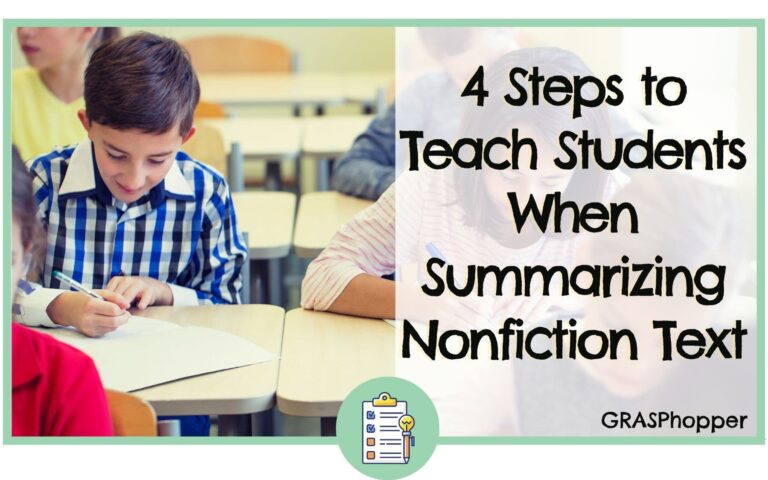
4 Steps to Teach Students When Summarizing Nonfiction Text
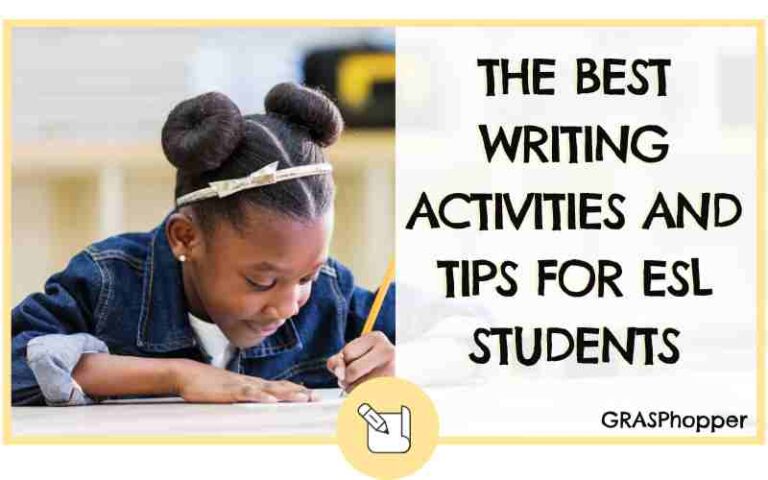
The Best Writing Activities and Tips for ESL Students
Teach smarter, not harder join the newsletter.
Transform your teaching with our teaching tips, resources, and freebies delivered straight to your inbox!

The Goodies
© GRASPhopper Learning • Website by KristenDoyle.co
- International edition
- Australia edition
- Europe edition

How to teach ... creative writing
Summer is the perfect time of year for a spot of creative writing. Inspire young imaginations to put pen to paper with our lesson plans and ideas
From birds chirping aloft the trees to sapphire blue lakes sparkling in the sun, the sights and sounds of summer make it the perfect time of year for a spot of creative writing. Getting students to put pen to paper is a good way to spark their imaginations, develop reading and writing skills, and teach about empathy.
To help you and your class get inventive, this week’s how to teach brings you a selection of ideas and resources to inspire the creativity of young wordsmiths.
Primary students
Author Nick Hesketh recommends that before children start writing, you should discuss what makes a good story. He shares this and other advice in his creative writing video series for the Scottish Book Trust . Get students thinking with these “badly written” exemplars , which provide a handy baseline to work from.
Next, capture young imaginations by getting students to think about the story they want to tell. Where is it set? At what time of day? What is the weather like? What can you hear, see, smell or feel? This worksheet by Creative Writing Now will help students get to know their main character, while this plot questionnaire will encourage them think about what is going to happen. Then get your class penning their masterpieces, writing just a few sentences to begin with. Stress that they shouldn’t worry about spelling, instead, just put a wavy line under any words they are unsure of. There are examples of well thought-out sentences here .
Creative writing should be fun, and playing games is good way to help students develop story ideas. Try an alternative word association game in which you think of words that are at odds with each other (such as “boat” and “rock”) instead of words that are connected (such as “boat” and “water”). The aim is to show that good story ideas often involve some sort of tension. We also have instructions for a fun game called The Invisible Book , which involves students coming up with the first three sentences of a story on the spot, which helps them find their writer’s voice.
If ideas aren’t flowing, kickstart things by stepping outside of the classroom and into the playground as suggested in this resource by WordSpace . Give students unusual things to write on, such as the back of an envelope, a leaf, or a rough piece of wallpaper. Or challenge them to write a short story in just 50 words.
A quick way to conjure up story ideas is through pictures. Use prompts such as this image of two boys sitting on the wing of an aeroplane or this one of a dinosaur in the garden , which can work really well. Another tip from writer and teacher Heather Wright is to ask students to start several stories then choose the one they want to finish. This writing checklist will help students evaluate their work when it’s finished.
Secondary students
Challenge secondary students to write a story in just six words or get them to compile a list of objects for an imaginary cabinet of curiosity. These are just some ideas offered by the Writers’ Centre Norwich , a literature development agency based in England’s only UNESCO City of Literature . They have produced an easy-to-use 20-page activity pack for the classroom, which introduces a range of genres and draws on a variety of writing stimuli including photographs and poems.
If students want to get to the heart of a character, ask them to address the audience as their favourite fictitious creations. Writing a monologue is the focus of this key stage 4 resource by the Poetry Society . A second resource encourages students to create a piece of writing based on what they can – and can’t – see out of an imaginary window. The aim is for students to make effective use of descriptive detail as they write short lines of poetry in response to a series of prompts. As a homework task, ask students to repeat the exercise while looking out of a real window.
Students doing creative writing at A-level need to work in a whole range of written forms and genres including creative non-fiction and web content. They should be prepared to share work-in-progress with others, responding to feedback and developing drafting and editing skills. They should also write regularly to deadlines and keep a journal of writing ideas. You’ll find useful advice on approaching the first term of teaching in this guide by AQA . You’ll also find additional ideas to support learning and teaching here .
For those who are eager to take creative writing even further, this resource offers useful information on how to set up a creative writing club.
Finally, remember to encourage young people to read as often and as widely as possible – this is one of the most effective ways to teach creative writing. With this in mind, be sure to set your students off on the Summer Reading Challenge . You’ll find lots of reading and writing activities in this year’s pack .
Follow us on Twitter via @GuardianTeach . Join the Guardian Teacher Network for lesson resources, comment and job opportunities , direct to your inbox.
- Teacher Network
- How to teach ...
- Teaching tips
- Primary schools
- Secondary schools
- English and creative writing
Comments (…)
Most viewed.
It's Lit Teaching
High School English and TPT Seller Resources
- Creative Writing
- Teachers Pay Teachers Tips
- Shop My Teaching Resources!
- Sell on TPT
Teaching Creative Writing: Tips for Your High School Class

When I was first told that I’d be teaching creative writing, I panicked. While I had always enjoyed writing myself, I had no idea how to show others how to do it creatively. After all, all of my professional development had focused on argumentative writing and improving test scores.
Eventually, though, I came to love my creative writing class, and I think you will too. In this post, I hope to help you with shaping your own creative writing class.
Disclosure: This post may contain affiliate links that earn me a small commission, at no additional cost to you. I only recommend products that I personally use and love, or think my readers will find useful.

The Importance of Teaching Creative Writing
Before getting into the nitty-gritty of how to teach creative writing, let’s first remind ourselves why you should teach a creative writing class.
How often do you see students freeze in your English class, wondering if what they’re writing is “right”? How often do your students beg you to look over their work to make sure that they’re doing it “right”?
We English teachers know that there’s no such thing as “right” when it comes to writing. But our students really struggle with the idea of there being no one correct answer. Creative writing is one solution to this problem.
By encouraging our students to explore, express themselves, and play with language, we show them how fun and exploratory writing can be. I know there have been many times in my life when writing clarified my own ideas and beliefs for me; creative writing provides this opportunity for our high school students.
Plus, creative writing is just downright fun! And in this modern era of standardized testing, high-stakes grading, and just increased anxiety overall, isn’t more fun just what our students and us need?
Creative writing is playful, imaginative, but also rigorous. It’s a great balance to our standard literature or composition curriculum.
Whether you’re choosing to teach creative writing or you’re being voluntold to do so, you’re probably ready to start planning. Make it as easy as possible on yourself: grab my done-for-you Creative Writing Class here !
Otherwise, preparing for an elective creative writing class isn’t much different than preparing for any other English class .
Set your goals and choose the standards you’ll cover. Plan lessons accordingly. Then, be sure to have a way to assess student progress.
Teaching Creative Writing Tip #1: Get Clear on Your Goals
First, what do you want to achieve with your creative writing class? In some school, Creative Writing is purely a fun elective. The goal is create a class that students enjoy with a side of learning.
For other schools or district cultures, however, Creative Writing might be an intensely academic course. As a child, I went to an arts middle school. Creative writing was my major and it was taken very seriously.
The amount of rigor you wish to include in your class will impact how you structure everything . So take some time to think about that . You may want to get some feedback from your administrator or other colleagues who have taught the course.
Some schools also sequence creative writing classes, so be sure you know where in the sequence your particular elective falls. I’ve also seen schools divide creative writing classes by genre: a poetry course and a short story course.
Know what your administrator expects and then think about what you as an instructor want to accomplish with your students.
Teaching Creative Writing Tip #2: List Out Your Essential Skills
Regardless of your class’s level of rigor, there are some skills that every creative writing course should cover.

First, you need to cover the writing process. Throughout the course, students should practice brainstorming, outlining, writing, and editing their drafts. In nearly every Poem Writing Activity that I use in my class, students follow the same process. They examine a model text, brainstorm ideas, outline or fill out a graphic organizer, put together a final draft, and then share with a peer for feedback.
That last step–sharing and critiquing work–is an essential skill that can’t be overstated. Students are often reluctant to share their work, but it’s through that peer feedback that they often grow the most. Find short, casual, and informal ways to build in feedback throughout the class in order to normalize it for students.

Literary terms are another, in my opinion, must-cover topic for teaching a creative writing class. You want your students to know how to talk about their writing and others’ like an actual author. How deep into vocabulary you want to go is up to you, but by the end of the course, students should sound like writers honing their craft.
Lastly, you should cover some basic writing skills, preferably skills that will help students in their academic writing, too. I like to cover broad topics like writing for tone or including dialogue. Lessons like these will be ones that students can use in other writing assignments, as well.
Of course, if you’re teaching a creative writing class to students who plan on becoming creative writing majors in college, you could focus on more narrow skills. For me, most of my students are upperclassmen looking for an “easy A”. I try my best to engage them in activities and teach them skills that are widely applicable.
Teaching Creative Writing Tip #3: Make Sure Your Materials are Age-Appropriate
Once you know what you’re teaching, you can begin to cultivate the actual lessons you’ll present. If you pick up a book on teaching creative writing or do a quick Google search, you’ll see tons of creative writing resources out there for young children . You’ll see far less for teens.

Really, the content and general ideas around creative writing don’t change much from elementary to high school. But the presentation of ideas should .
Every high school teacher knows that teens do not like to feel babied or talked down to; make sure your lessons and activities approach “old” ideas with an added level of rigor or maturity.
Take for example the haiku poem. I think most students are introduced to haikus at some point during their elementary years. We know that haiku is a pretty simple poem structure.
However, in my Haiku Poem Writing Lesson , I add an extra layer of rigor. First, students analyze a poem in which each stanza is its own haiku. Students are asked not only to count syllables but to notice how the author uses punctuation to clarify ideas. They also analyze mood throughout the work.
By incorporating a mentor text and having students examine an author’s choices, the simple lesson of writing a haiku becomes more relevant and rigorous.

Teaching Creative Writing Tip #4: Tell Students What They Should Not Write About
You’ll often be surprised by just how vulnerable your students are willing to be with you in their writing. But there are some experiences that we teachers don’t need to know about, or are required to act on.
The first day of a creative writing course should always include a lecture on what it means to be a mandated reporter. Remind students that if they write about suicidal thoughts, abuse at home, or anything else that might suggest they’re in danger that you are required by law to report it.
Depending on how strict your district, school, or your own teaching preferences, you may also want to cover your own stance on swearing, violence, or sexual encounters in student writing. One idea is to implement a “PG-13” only rule in your classroom.
Whatever your boundaries are for student work, make it clear on the first day and repeat it regularly.

Engage your students in more creative writing!
Sign up and get five FREE Creative Writing journal prompts to use with your students!
Opt in to receive news and updates.
Keep an eye on your inbox for your FREE journal prompts!
Teaching Creative Writing Tip #5: Give Students Lots of Choice

Creative writing should be creative . Yes, you want to give students parameters for their assignments and clear expectations. But you want them to feel a sense of freedom, also.
I took a class once where the story starters we were given went on for several pages . By the time we students were able to start writing, characters had already been developed. The plot lines had already been well-established. We felt written into a corner, and we all struggled with wrapping up the loose ends that had already been created.

I’ve done an Author Study Project with my class in which students were able to choose a poet or short story author to study and emulate. My kids loved looking through the work of Edgar Allan Poe, Elizabeth Acevedo, Neil Gaiman, and Jason Reynolds for inspiration. They each gravitated towards a writer that resonated with them before getting to work.
Another example is my Fairy Tale Retelling Project. In this classic assignment, students must rewrite a fairy tale from the perspective of the villain. Students immediately choose their favorite tales, giving them flexibility and choice.
I recommend determining the form and the skills that must be demonstrated for the students . Then, let students choose the topic for their assignment.
Teaching Creative Writing Tip #6: Use Hands-On Activities
If you’re teaching a class full of students who are excited to write constantly, you can probably get away writing all class period. Many of us, however, are teaching a very different class. Your students may have just chosen an elective randomly. They might not even have known what creative writing was!
(True story–one of my creative writing students thought the class would be about making graffiti. I guess that is writing creatively!)
For students who have no long-term writing aspirations, you need to make your lessons and activities a little more engaging.
When possible, I try to make writing “hands-on.” Adding some tactile activity to a standard lesson breaks up class, engages students, and makes the lesson more memorable.

For example, when I teach students the old adage “Show. Don’t Tell” , I could just give them a scene to write. Instead, I print simple sentences onto strips of paper and have students randomly select one from a hat. (Then they turn this simple sentence into a whole “telling” scene.)
Simply handing students a strip of paper that they can touch and feel makes the lesson more exciting. It creates more buy-in with students.
Another one of my favorite hands-on activities is a Figurative Language Scavenger Hunt. I hang up posters of mentor poems around the room, each full of different figurative language techniques.
Then, students must get up and explore the posters around the room in an attempt to find an example of 10 different figurative language techniques.
We could do the same lesson on a worksheet, but having students up and moving increases engagement, collaboration, and gives everyone a break from constantly sitting.

Teaching Creative Writing Tip #7: Incorporate Mentor Texts
One way to make sure that your creative writing class is rigorous–and valuable–enough for high school students is to use mentor texts .
Mentor texts are essential for older students because it shows them what’s possible . Many of my students will rush through an assignment just to be done with it. If you ask them what they could do to improve their writing, they say that they think it’s fine.
But when they’re shown mentor texts or exemplar products produced by their peers, suddenly students see a myriad of ways in which they could improve their own work. They’re quick to make edits.
I try to always include a mentor text and several examples whenever I introduce students to new ideas or teach a new lesson. You can pull mentor texts from classic writers. However, I also recommend including writing from more modern poets and writers as well.
Teaching Creative Writing truly is a special job. Your students trust you with writing that many adults in their lives will never see. You’ll be able to watch students grow and bloom in a totally new way.
That doesn’t mean that teaching creative writing is without challenges or difficulties, however. If you want an easy place to start, or just want to save yourself a ton of planning time, I highly recommend checking out my Complete Creative Writing Class .
Inside this bundle, you’ll receive daily warm-ups, weekly lessons, two projects, several activities, a lesson calendar, and more! It’s truly everything you need for an engaging 9-week elective course!

- Our Mission
How to Use Images to Teach Creative Writing
Landscape paintings can inspire elementary students to use their five senses and incorporate imaginative details in their writing.

As soon as my elementary students have learned how to string words together to form sentences, I have them writing paragraphs and essays. To me, teaching writing is about passing my love of the creative process on to my students—and I have yet to meet a child who was not born to write.
When I was a new teacher, my students were fascinated by my daily calendar, which featured landscape paintings. They would stand by my desk between classes and tell me stories about the paintings. From there, the leap was natural: I could use art to teach them how to use their imaginations to write. Over time, I’ve refined the approach by having them pair paintings with prompts rooted in the five senses.
Back then, I saved the landscapes as I tore them off each day until I had enough for every student in my class. Each student first shared their painting with the class and then wrote, “What I see in the painting,” at the top of a sheet of paper.
Next, I had the students use simple sentences to list what they saw in their picture. I walked around the room helping them to grow their sentences. Sentences such as “I see a cloud ” became “I see a big, white, fluffy cloud.” As the students added adjectives to their sentences, we discussed other ways to grow sentences with similes, metaphors, and personification; with a little thought, the sentence became “I see a big, white, fluffy cloud that looks like cotton candy and I would like to eat it.”
My students quickly caught on, and their sentences became more imaginative. At the end of class, I had them turn in their picture and paper to me to keep for the next day.
On the second day, I passed out the paintings again, with a second sheet of paper. When I had students write at the top of the paper, “What I hear in the picture,” they were confused: How could they hear a picture?
“Imagine the painting is real and you are standing somewhere inside it. Point to where you are standing.” The students studied their pictures carefully, chose their spots, and pointed.
“Now close your eyes and imagine you are there,” I instructed. “Can you see it in your mind? Tell me what you hear.”
The students scrunched up their faces as they concentrated. “I hear a bird,” one finally said. “I hear a fountain,” another said.
Suddenly they were all chiming in. As they wrote down their sentences, I moved around the room as I’d done the day before, helping them grow their sentences. This time, the students were much quicker. “I hear a bird” quickly became “I hear a mama bird yelling at her kids because they made a mess of the nest.” At the end of the class, I again collected their papers and pictures.
The third day’s prompt was “What I can touch.” Once they’d chosen a spot in their painting, I asked them to close their eyes and imagine the weather within it. “Can you feel a breeze? Is it hot or cold?” This time, the students told me they were running through their painting on the warm grass, splashing in the cold water of the creek, climbing the scratchy bark of the trees, and touching the soft petals of the flowers. This time, I didn’t have to help them with growing their sentences; their creativity was running wild all on its own.
Taste and Smell
We explored the last two senses together. I first explained to my students how smell and taste are linked and started off by asking them what they could smell in their paintings. The students talked about the scent of the roses in the garden and the freshly mowed grass in the yard; one of the students said that the house in the picture reminded him of his grandmother’s and he could smell and even taste her fried chicken. Another said that they were having a picnic with delicious lemonade, and yet another told me that the American flag in the painting reminded him of July Fourth—he could smell the fireworks.
Putting It All Together
On the final day of the project, I passed all four pieces of paper back to the students along with a fifth, with lines organized and indented into six paragraphs. In the first paragraph, I had the students introduce themselves and share the name of their painting and artist. Then they used their notes from earlier in the week to write a paragraph for each day. They ended their essay with what they liked best about their painting. (For older students, try some of these strategies for revising a final draft.)
Then they mounted their picture on construction paper and drew a frame around it. I gathered their paintings into a notebook; students took turns reading each other’s essays for the next week. A local art gallery displayed the notebook, and seeing their work being read by others inspired my students to keep writing. Now, because I no longer use a printed calendar, local art galleries donate postcards that we use in exchange for exhibiting the notebook.
As an international teacher, I’ve seen art bridge gaps that diplomacy could not. Once a seventh-grade English language learner wrote that she could hear the sound of freedom in her picture. When I asked her about it, she pulled out her picture of a painting of an American soldier walking toward the light. “I don’t know what freedom sounds like,” she said as she reverently touched the soldier, “but I know he’s hearing it.”

Disclosure: MyeLearningWorld is reader-supported. We may receive a commission if you purchase through our links.
How to Teach Creative Writing for Kids in a Fun Way
Published on: 11/17/2022
By Scott Winstead
- Share on Facebook
- Share on LinkedIn
- Share on Reddit
- Share on Pinterest
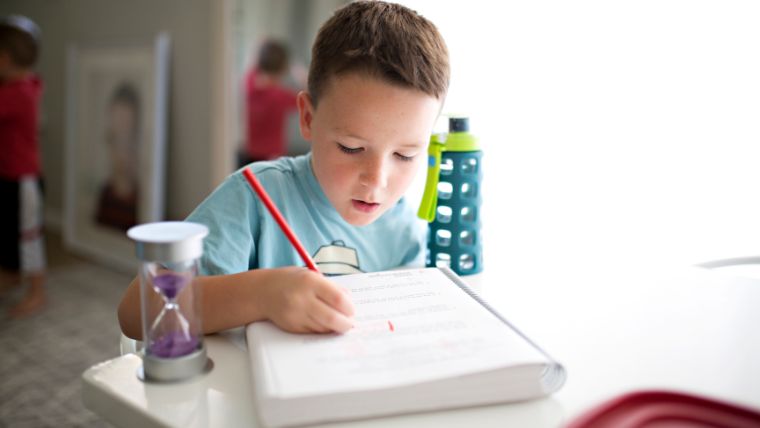
Creative writing for kids is not only a fun activity, but it can also teach them to express their thoughts and feelings in words.
Teaching creative writing to kids can be a fun and rewarding experience. It can also be a great way to get their imaginations going and help them develop their writing skills.
Of course, teaching kids creative writing can also be incredibly challenging and frustrating.
The ability to write creatively is an important skill for young people to develop. It can help them express themselves, explore their imagination, and better understand the world around them.
Furthermore, creative writing can also be a great way for kids to connect with others. By sharing their stories and ideas, they can build relationships and develop a sense of community.
In addition, creative writing can be a fun and rewarding activity in its own right. It can provide a much-needed outlet for kids who are struggling with other aspects of their life, and it can give them a sense of achievement and pride.
But how can you help your kid develop his or her creative writing skills in a way that’s both fun and effective?
Here are some tips to make creative writing for kids something they’ll enjoy and benefit from:
7 Tips to Teach Creative Writing to Kids
1. use online writing games to spark creativity.
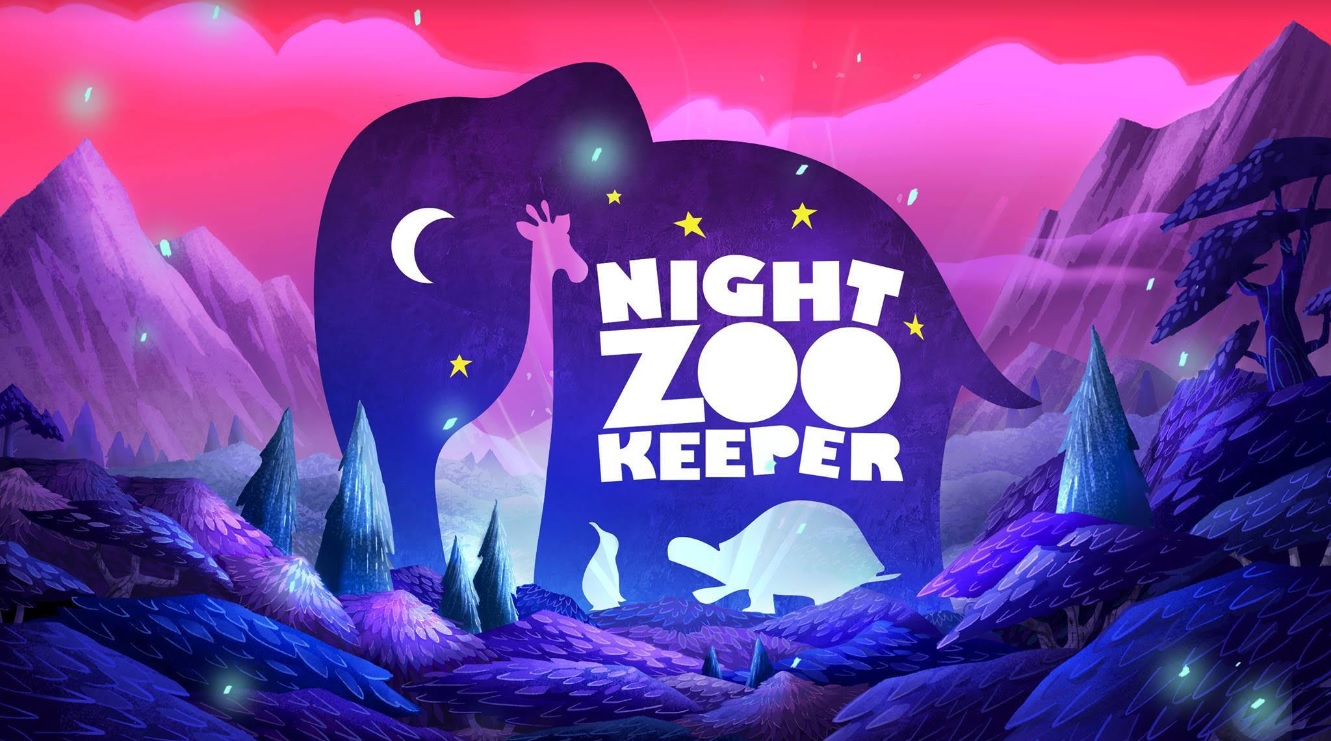
This highly rated online learning program helps kids with reading and writing, and unleashes their full creativity.
Instead of just having your child sit down and write, try using online writing games to get their creative juices flowing. There are tons of great options out there, and they can be a fun way for kids to explore their imagination and learn new words.
Our favorite is Night Zookeeper , where kids can manage their own zoo and write stories about the animals.
Not only is it a great way to get kids writing, but it’s also a lot of fun.
Kids get personal feedback from professional educators on their creative writing so they can improve their skills, and they can also share their stories with other kids in the community as well as with their family and friends.
Night Zookeeper’s fun and engaging writing games help kids develop their vocabulary, grammar skills, and creativity.
It’s a fantastic way to promote creative writing for kids.
Click here to check out the latest special offers and savings on Night Zookeeper today.
2. Use interesting writing prompts to foster creativity
One of the best ways to encourage creative writing in kids is to give them fun, off-the-wall writing prompts to inspire them.
By providing a specific topic or challenge, writing prompts can help kids break out of their comfort zones and explore new ideas.
In addition, writing prompts can help to improve writing skills by forcing kids to think critically and structure their thoughts in a concise way.
Perhaps most importantly, though, writing prompts can simply be a lot of fun. By giving kids the freedom to write about whatever they want based on a prompt, you can help them tap into their creativity and come up with some truly imaginative stories.
3. Work through writing prompts together
If your child is still in the early stages of developing his or her creative writing skills, you’ll want to work with them to come up with ideas and structure their thoughts based on the prompt you’ve provided.
You can help your child dig into the prompt by asking questions like:
- What does this prompt make you think of?
- What kind of story could you tell based on this prompt?
- What are some possible challenges your character could face in this story?
- What kind of ending do you think would be satisfying for this story?
- Why would the character take a certain action?
Asking questions like these can help to get your child’s creative juices flowing and ensure that their story has a solid foundation.
4. Help them edit and revise their work
Once your child has written a story, it’s important to help them edit and revise their work. This is an important part of the creative writing process, and it can help to improve writing skills as well as foster creativity.
Start by reading through the story with your child and asking questions about what they’ve written.
Does the story make sense?
Are there any passages that are confusing or could be improved?
Then, help your child revise their story based on your feedback. This may involve adding, deleting, or rearranging passages, but it will ultimately help to improve the quality of their writing.
Just remember not to be overly critical to the point of discouraging your child – the goal is to help them improve their story, not to tear it down.
5. Encourage them to keep writing
Creative writing is a skill that takes time and ongoing, regular practice to develop. The more your child writes, the better they’ll become at it.
So, encourage them to keep writing, even if they don’t think their stories are perfect. The important thing is that they’re writing and having fun with it.
You can give them daily writing prompts, or even just encourage them to keep a writing journal to jot down their thoughts and ideas.
The more they write, the better they’ll become at it – and the more fun they’ll have in the process.
6. Promote reading, too
It’s also important to encourage your child to read as much as possible. Reading can help to improve writing skills, foster creativity, and provide inspiration for new stories.
So, make sure your child has plenty of books available, and take them to the library on a regular basis. The more they read, the better they’ll become at writing – and the more fun they’ll have with it, too.
7. Practice storytelling aloud together
Telling stories out loud is a great way to encourage your child to be creative and have fun with their writing.
You can take turns telling stories based on prompts, or even just make up stories together spontaneously. You can do this as a family game where each person makes up a few lines of the story and then hands it off to the next person, or you can take turns telling longer stories.
Not only is this a great way to encourage creativity, but it’s also a lot of fun. And, it’s a great way to bond as a family.
Final Thoughts on Creative Writing for Kids
Creative writing is an important skill for kids to develop.
It helps them to express themselves, explore their imagination, and communicate their thoughts and feelings.
And, of course, it’s simply fun!
Writing stories, poems, or even just journaling can be a great way for kids to unwind and let their creative juices flow.
So if you’re looking for a way to encourage your child’s creativity, use the tips above to help them get started with creative writing.
Night Zookeeper Black Friday & Cyber Monday Deals Guide (2022): 55% Off!
The 10 best reading games for kids (2023 reviews & rankings), leave a comment cancel reply.
Save my name, email, and website in this browser for the next time I comment.
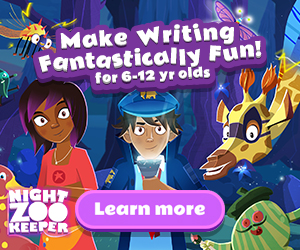
- Skip to main content
- Skip to primary sidebar
- Skip to footer

Additional menu
Khan Academy Blog
Encouraging Your Child’s Creativity: How to Write a Short Story with Khanmigo
posted on September 20, 2023
By Stephanie Yamkovenko , group manager of Khan Academy’s Digital Marketing Team.

Storytelling is an essential part of a child’s development. It allows them to explore their imagination, develop language skills, and improve their understanding of the world around them. However, not every parent has the confidence to write a story with their child. That’s where Khanmigo , an AI tutor from Khan Academy, comes in. In this blog post, we will look at the importance of story writing for children and how parents can use AI to write short stories with their children. We will also provide step-by-step instructions on how to use Khanmigo to piece together a short story using Khanmigo’s AI prompts as well as offer examples of stories created using Khanmigo.
Why Story Writing is Important for Children
Storytelling is an ancient form of communication, and it has always been an essential part of human culture. It is not just a leisure activity but has a significant impact on children’s growth and development ( Bietti, 2019) . Writing stories can be an exciting and fun way for kids to explore their creativity, develop their language abilities, expand their vocabulary, practice critical thinking, and build their communication skills (National Research Council, 2015) . Not only does writing stories improve a child’s writing skills, but it can also boost their reading comprehension, critical thinking, and self-expression. Check out some of the benefits children gain from learning how to write short stories, backed by research:
- Enhanced cognitive development: According to a study from Sook-Yi Kim (2014) , storytelling can enhance children’s cognitive development, particularly in areas such as memory and sequencing events.
- Improved language skills: Reports from the National Literacy Trust suggest that storytelling helps children develop a wider vocabulary and a better understanding of language structure.
- Boosted creativity: Per research in the Journal of Creative Behavior , storytelling allows children to explore different narratives and perspectives, thereby fostering creativity.
- Developed emotional intelligence: A study published in Reading & Writing Quarterly indicates that through storytelling, children can explore diverse emotions and situations, helping them better understand and express their feelings.
Prompts to Use for a Short Story with ChatGPT
To write a story using ChatGPT, follow these prompts:
- Start with a question: Think of an intriguing question that can capture the reader’s attention and lead them to the story’s plot. For example, “What would happen if gravity suddenly stopped working?”
- (optional) Choose a setting (e.g., Mars, an elementary school, or a grocery store).
- (optional) Choose a conflict (e.g., a misunderstanding, a lost object, or a personal fear that holds back the protagonist).
- Create your characters: Develop a protagonist, an antagonist, and secondary characters. Give the characters personalities, traits, and quirks that will make them stand out.
- Make a plot: Craft an exciting and engaging storyline that includes a beginning, a middle, and an end. Use the question and topic as a starting point. Decide how your protagonist will overcome their conflict, and develop the story from there.
- Review and edit: After finishing the story, review and edit it to make sure it flows smoothly and makes sense.
Using Khanmigo for Story Writing
Khanmigo can do all of this for you via a question-and-answer format that will walk your child through the entire process of writing a story. Khan Academy released a new feature in 2023 called Khanmigo—an AI-powered tutor that assists children in their learning journey. Khanmigo offers a wide range of interactive student-focused activities that can encourage creativity and support writing development, such as creative writing prompts.
Khanmigo’s AI tutor can provide invaluable assistance to parents who want to encourage their child’s writing development. When children use Khanmigo for story writing, they receive personalized guidance and suggestions that help them improve their writing skills.
Khanmigo will ask your child questions about the story they are writing together to draw out ideas for plot, characters, conflict, and more. Even if these concepts are unfamiliar to your child, Khanmigo will help explain each step along the way. For example, “Now, let’s start with the setting. Where does our mystery take place? A spooky old mansion? A bustling city? A quiet little town? Or somewhere else entirely? And what’s the weather like? Remember, the setting can add so much to the mood of our story!”
Khanmigo can serve as a writing partner, providing feedback and support throughout the writing journey. Children using Khanmigo will be able to practice their writing skills while developing their creativity, imagination, and critical thinking abilities.
Parents can use Khanmigo to monitor their children’s progress, provide feedback, and make sure that children are effectively developing their writing skills and creativity. Through Khanmigo, parents can keep track of their child’s writing progress, view their work, and set weekly writing goals.
Start writing stories with your child
We promise, you’ll have an adventure…
How to Start Creating a Story with Khanmigo
Here is an example of how you may start an interaction to create a story with Khanmigo.
Khanmigo: “Would you like to write an awesome story together? Let’s do it.
- You can choose a topic from the list, or suggest another idea.
- If I use new words like ‘theme’ or ‘plot,’ just ask me to explain.
- At any point, you can ask me to show you what we have so far.
- Once we’re done, you can chat with some of the characters and admire the world we’ve built!”

…we don’t want to ruin the end of the story, but we hope this gives you a sense of the journey your child will go on while co-creating with Khanmigo.
Raising Confident Story Tellers
Encouraging your child to write stories is an excellent way to foster their creativity and imagination. By providing them with engaging prompts, you can help them develop their critical thinking and language skills while also having fun.
With Khanmigo, parents can take their child’s creativity and writing to a whole new level. By leveraging Khan Academy’s AI tutor, parents can help their children practice their writing skills, expand their vocabulary, and develop their communication skills. Give your child a tool that will help shape their writing and help them grow into confident story writers.
Bietti LM, Lucas M., Tilston O, 1 and Bangerter A, “Storytelling as Adaptive Collective Sensemaking” Top Cogn Sci. 2019 Oct; 11(4): 710–732.
National Research Council; Institute of Medicine ; Board on Children, Youth, and Families ; Committee on the Science of Children Birth to Age 8: Deepening and Broadening the Foundation for Success ; LaRue Allen and Bridget B. Kelly, Editors, “Transforming the Workforce for Children Birth Through Age 8: A Unifying Foundation”, 2015
Kim, Sook-Yi, “The effects of storytelling and pretend play on cognitive processes, short-term and longterm narrative recall.” (1996). Doctoral Dissertations 1896 – February 2014. 5243. https://scholarworks.umass.edu/dissertations_1/5243
Best. E, “Playful storytelling: The role of interactive audio in building children’s literacy skills and engagement”, National Literacy Trust, June 2021
Angus Fletcher, Patricia Enciso, Mike Benveniste, Narrative creativity training: A new method for increasing resilience in elementary students, Journal of Creativity, Volume 33, Issue 3 , December 2023, 100061
Catherine Z. Wright & Sandra Dunsmuir (2019) The Effect of Storytelling at School on Children’s Oral and Written Language Abilities and Self-Perception, Reading & Writing Quarterly, 35:2, 137-153, DOI: 10.1080/10573569.2018.1521757
Get Khanmigo
The best way to learn and teach with AI is here. Ace the school year with our AI-powered guide, Khanmigo.
For learners For teachers For parents

- SAFE SEARCH
- SAFE IMAGES
- SAFE VIDEOS
9 Easy Ways to Improve Your Child’s Creative Writing Skills

Creative writing skills boost problem-solving, innovation, and resourcefulness. Helping our kids build these skills is important. Plus, it also gives them an outlet for all their creative ideas. How do you build those skills without making it seem like work?
Here are 9 ways to make creative writing skills fun:
1. Read Often
Books are the best precursor to writing. So get your kids reading! With repeated exposure to words, ideas, and styles, and in books, kids build the ability to mimic and adopt them.
Flood them with exposure to books and watch their skills rise. Yes, it will look a lot like what they’ve read at first. That’s ok! They’re just playing “dress up” with other people’s ideas. They’ll soon start writing like themselves.
Encourage your children to read more than one type of writing. If they gravitate toward non-fiction, maybe try historical fiction. If they only like superhero stories, introduce them to a story with a main character of a different gender or ethnicity.
2. Identify Ways to Practice
Just like anything, improving creative writing skills takes practice. Set your children up for success by making practice easy and fun. This will only help them in future grades when they are required to write book reports .
You can piggy-back creative writing off of other imaginative play and encourage your child to write down episodes of the games he plays. Allow the free flow of ideas – the more creative the better!
Focus on this type of activity can be tricky for kids. It’s important to give kids a dedicated writing space. Fill it with fun paper or a kids’ journal, great pencils, and few distractions.
3. Encourage Your Child to Write
Children are often predisposed to wanting to write. Even before they can form letters correctly, many children will say they are “writing.”
Nurture this desire!
When children feel writing is powerful, and their writing matters, they will want to keep trying. However, they want to start writing is how they should write.
If your child struggles with the physical act of writing, consider helping with that part. You can use talk-to-text features in apps or even agree to be their “scribe.” Then they worry less about the act of writing and pay more attention to the ideas they are forming.
4. Encourage Journaling
Journaling is a great way to encourage creative writing. It gives them a concrete way to see their “progress” writing.
A handful of kids’ journals often come preloaded with prompts and ideas, which helps kids get started. It also helps that journaling is usually a daily activity. By having smaller, but more frequent, writing sessions, it helps children develop a perspective on what writing can be.
Journaling also helps build emotional intelligence. By writing about their feelings, children work through their thoughts and emotions and are better able to recognize and accept them. It gives them the opportunity to talk about difficult things without embarrassment, advice, or recrimination.
5. Use “Feeling” Words
Another benefit of building creative writing skills is children learn to use powerful words to draw in their readers.
You can encourage this development by helping them give their character’s feelings. When writers allow their characters to feel, they make them more relatable and interesting. But since the feelings of the characters don’t necessarily come to mind for kids, direct suggestion may help. Help them get there by asking questions about the characters. Why was the hero doing that? What was she thinking? How was she feeling?
Additionally, use inclusive language to make readers feel part of the story as it evolves. Educate children on the diversity of readers and encourage them to introduce characters that are from different cultures and backgrounds.
6. Use Writing Prompts
Does your kid express an interest in writing only to freeze when they actually try to write? Writing prompts could help your child overcome it.
Writing prompts can be found in many places. Look for interesting signs, funny pictures in advertisements, or even just asking “what if” and “why” questions . You could even play a song to inspire ideas and writing.
The idea is not to make them write about something, but to give them enough of an idea to push past the fear of getting started. Once kids get past the first few sentences and are “in” their story, their ideas will come to the surface.
7. Practice Storytelling
The reason why many creative writers write is their love of story. To help your child build creative writing skills, foster that love.
The key is to focus on telling a great story, not the writing. Let your child’s imagination run free as he piece together details that can complete a tale.
You can build stories together, with each person telling a few lines of the story before passing it along to the next. Or you can “get stuck” telling your story and need their help figuring out what happens next.
Whatever twists and turns in the plot happen are magical because it shows your child is learning they are driving the story. They get to create.
8. Play Games
A robust vocabulary is another important creative writing skill. To help your child build their vocabulary, try playing word games.
Word games are great because they put the emphasis on the game, not the vocabulary learning. The competitive aspect increases their intrinsic motivation to learn the words. The games themselves are great family activities.
If your child isn’t competitive, there are plenty of team-oriented options. You could also try magnetic poetry, other game-like world builders, or even a cool journal for kids where they write down fun words they’ve heard.
9. Provide Inspiration
The best inspiration for kids to write comes from loving the work of other writers. When your child has a book or series they love, keep it going! Encouraging their love of reading – and their love of story – will help them internalize the way their favorite authors write.
Reading to your children helps too. Because you can read higher-level books while your child listens, it allows them to focus on the story. It also gives you a chance to have conversations about meaning, characters, and plot.
As children read, they build vocabulary and understanding of how good stories develop. They will eventually be able to incorporate these ideas into their creative writing.
Creative writing is sometimes seen as a hobby- something to enjoy, but not to be taken too seriously. But building creative writing skills positively impacts children because they learn to express themselves, they practice writing about emotions, and they practice making their writing compelling to their readers.
Whichever strategies you use to help your child improve their creative writing styles, make sure you keep it light-hearted. When it is fun, they’ll want to keep trying, and that’s where the growth happens.

About the Author:
Alexandra Eidens is the founder of Big Life Journal, an engaging resource to help kids develop a resilient growth mindset so they can face life’s challenges with confidence.
Read more about writing and why it’s important to teach your kids cursive writing .

Distinct Types of Learning
Article categories.
- Online Safety for Kids
- Internet Security
- Bullying / Cyberbullying
- Social Media Safety
Parental Controls
- Human Interest

TikTok's Hidden Corners

Top Programming Lanaguages

Parenting and Well-Being
- What Parents Should Know About Artificial Intelligence
- 10 Different Career Paths if You Love Working With Kids
- Child Developmental Delays To Look Out For
- How Parents Can Take Part in Their Child’s Eco-Education
- The Silent Educators: What Animals Can Teach Us
- How Social Media Is Making Kids Grow Up Too Fast
- A Teens Guide to Social Media Safety
- Balancing Privacy and Trust with Child Safety
- How to Introduce Cursive Writing to Kids
- The Difficult Conversation About Online Safety for Kids
- 5 Signs Your Child Has Math Problems (5 Solutions)
- How to Teach Your Kids About Misinformation Online
- Strategies To Help Your Child Transition To Daycare
- How to Get Your Children Interested in STEM
- Educational Resources for Teaching Kids at Home
- About Cyberbullying In Fan Culture
- 4 Tips for Studying with Dyslexia
- What is Open-Source Software?
- Fun Online Activities That Give Kids Confidence
- Using Technology To Gamify Fitness for Your Kids
- Is Your Child Ready for a Cell Phone?
- 4 Things to Know About Screen Time for Children with SPD
- Cyberbullying Using Parental Monitoring Apps
- Social Media Safety Tips for Kids
- Tips for When a Parent and Child Both Have ADHD
- Parent’s Guide to Social Networking for Gamers
- Social Media Safety Tips are Not Only for Kids
- Best Web Design Apps and Websites for Students
- Social Media Safety for Teens | Parent Guide
- Google Doodle Games You Can Still Play Online
- Teaching, Not Precluding, the Web
- How to Tell If Your Child is Involved in Cyberbullying
- How to Foster Empathy for Bullying Prevention
- Life of a 13 Year Old Girl in the Social Media Jungle
- 9 Amazing Skill Development Apps for Kids
- Is Online Therapy for Teens a Viable Solution?
- 5 Reasons to Sign your Kids Up for Online Spanish Classes
- Why Lawnmower Parenting is Detrimental to Children
- CyberBullying: A Word for Kids and Teens
- 6 Hygiene Tips Children Should Follow at School
- How Do You Help a Teenager with Mental Illness?
- How You Can Help Stop Cyberbullying
- Autodidacticism: How to Become a Self-Learner
- Tech Trends to Make the Internet a Safe Place
- 7 Tips To Help Children Develop A Positive Attitude
- How to Post Pictures Online Safely
- Single Parent’s Guide with a Child Who is Being Bullied
- How Writing Skills Can Help Kids Master a New Language
- Why ABA Therapy is Important for Autistic Children
- How to Play Wordle (for kids too)
- Teaching Kids to Code a Website from Scratch
- What is Stimming ADHD? (Effect on the Human Body)
- Teaching Kids to Mitigate Online Burnout
- Pros and Cons of Online Jobs in Teaching
- Using the Internet for Learning
- Top Online Courses for Kids
- Instant Answers for Kids Using Safe Search
- Building Good Study Habits in Early Childhood
- 5 Online Class Productivity Tips for Teachers
- Easy Ways to Improve Your Child’s Creative Writing Skills
- Emojis Speak Louder: Decoding Kids’ Online Conversations
- Physical Activities to Relieve Stress in Children
- What You Can Do to Help Your Child Plan for a Career
- Common Signs Your Child Might Be Getting Bullied
- Art is a Science: Using Science to Nurture Children
- Blog Post Ideas for Kids Creating their First Blog
- What News Should Students Use?
- What Is An IP Address?
- Is Cyberschool a Safe Choice for Your Child?
- Learning With Puzzles and Games
- 5 Benefits of Doing Yoga with Your Child
- How to Help Your Child Learn More Effectively
- Thoughtful Ways to Teach Your Child About Ableism
- How to Build Self-Esteem in Teens for Good Mental Health
- What a Black Hole Picture Can Teach Us
- Top 5 Benefits of Speech Therapy for Kids
- What Parents Should Know About Online Sports Betting
- A 15 Day Reading Challenge For Your Kids
- How to Find Remote Online Teaching Jobs
- 8 Ways to Support Your Kids in School
- Doodle for Google: The Student Contest
- What is Simple Wikipedia?
- TikTok’s Hidden Corners: FYP Algorithms
- A Parent’s Guide to Incorporating and Educating Fire Safety
- How a Monolingual Child Becomes a Bilingual One
- Guiding Your Child’s Career Journey
- The Cognitive Benefits of Math Coloring in Young Minds
- Internet Safety for Kids
- Family Digital Detox Challenge: Reclaiming Online Privacy
- The Digital Detox (Screen Free Family Fun)
- Empowering Children with Autism: Effective Strategies
Articles on Education
- Exploring Geometry through Games (for Young Students)
- Effective Study Techniques for Secondary Students
- The Distinct Types of Learning in the Classroom
- Must Reads Before Starting High School Chemistry
- How to Cite Sources in Essays and Research Papers
- Comprehensive Guide to Inclusive Teaching
- Integrating Social Media Safety in School Curriculum
- Project-Based Learning Among Kids
- How to Create Flowcharts for Any School Subject
- Overcoming Challenges to Disability-Inclusive Education
- Online Coding for Kids | Coding Games
- The Fascinating Intersection of Math and Musical Theory
- How to Write Learning Objectives
- A Step-By-Step Guide On How To Write A Research Paper
- Most Popular Programming Languages to Learn
- How to Use Instagram as a Teaching and Resource Tool
- Empowering BIPOC Students for Success in Education
- What Does PEER REVIEW Mean in Academia?
- What Are the Biggest Obstacles to Learn Coding For Kids
- 10 Ways Teachers Can Use GitHub in the Classroom
- Learning about Programming: Guide For Beginners
- Technology In Empowering Students To Learn Better
- How to Write an Argumentative Essay
- 10 Ways to Engage Elementary Students with Reading
- How to Teach Kids to Code Without All The Tech Jargon
- 8 STEM Leaders Every Child Needs to Learn About
- History of DNA Testing in the Scientific World
- Things To Consider Before Joining Online Coding Classes
- Creating a Recommendation Letter: Guide for Students
- What Makes a Math Lesson Culturally Responsive?
- The Benefits of a STEM Education [and STEAM]
- Unknown Benefits of Coding For Kids
- Girl’s Involvement in STEM through Coding
- How to Prevent Plagiarism in Essays and Book Reports
- Understanding the Dunning-Kruger Effect (with Graph)
- Google Workspace for Education
- Resources to Teach Elements of Digital Citizenship
- How to Learn a New Language Faster
- Free Learning Apps That Develop Critical Thinking
- Using Social Media to Encourage Student Engagement
- The Benefits of Kindergarten that Parents Need to Know
- Increasing Representation for Black Students
- The Stages Of Teacher Professional Development
- PowerPoint Tips for Teachers
- Virtual Classroom | The best way to teach kids online
Internet Filtering & Security
- Teaching Kids About Cybersecurity
- Common Scams to Be Prepared For – Part 1
- Common Scams (Common Sense Prevention) – Part 2
- Creative Scams Compromising CyberSecurity – Part 3
- How Cyber Criminals Manipulate Your Trust
- How to Develop Good Password Management Habits
- The Basics of Webcam Security and Protection
- Important Safety Tips while Using Public WiFi
- Emerging Scams and New Tech to Beware Of
- Vulnerabilities in 2FA and MFA Authentication
- How Browsing Fingerprinting Tracks You
- Cyber Security and Online Risk Management
- Internet Security 101 | How To Be Safer Online
- Phishing, SMishing, Vishing, and Quishing
- Should I Save My Credit Card Information on a Website?
- Malware Removal and Protection
- Free Safe Search App for iPhone, Android, Kindle Fire
- Can Hackers Breach Microsoft 365 Accounts?
- How to Report an Email as Phishing
- Is a VPN Necessary? VPN’s Explained for Dummies
- Social Engineering (Psychological Manipulation)
- Safe Search Settings | How to Turn on Safe Search
- Ransomware Protection

- The Rise of the AI Generation – Qustodio Report
- Parental Controls on Every Device
- How to Protect Kids on WhatsApp
- Android Phone Monitoring
- How to Enable Snapchat Parental Monitoring
- Parental Controls for YouTube
- Best Parental Controls Apps for iPhone
- Free Parental Controls on All Devices
- Cyberbullying Prevention Using Monitoring Apps
- Covenant Eyes Accountability
- 7 Apps for Parental Controls
You are using an outdated browser. Upgrade your browser today or install Google Chrome Frame to better experience this site.
- Professional learning
Teach. Learn. Grow.
Teach. learn. grow. the education blog.

Anchor your writing instruction in big ideas students can remember
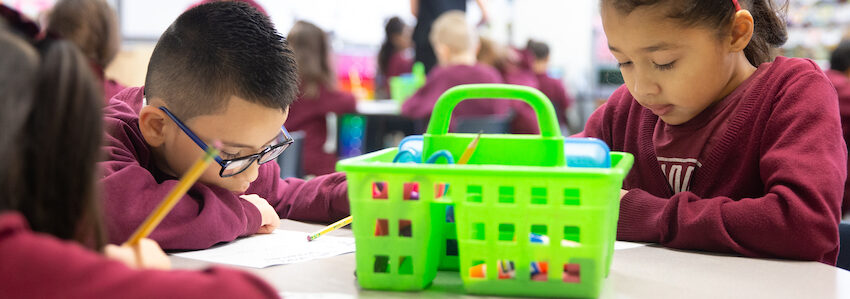
Years later, when one of my journalism students won a Los Angeles Times award for news writing, I thought more deeply about the instructional changes I had made. I also thought about the social and emotional factors that likely enabled this once-timid reporter to tackle tough issues and blossom into an adept writer. What I realized from this exercise is that many of my instructional shifts had more to do with “leaning in” and getting to know my student as a writer, along with “letting go” of some outdated notions about what good writing is.
These are the three most important lessons I learned that I’d like to pass along.
Lesson #1: Writing instruction begins with a shared language for talking about writing and a shared understanding of the purposes for writing
Anchoring your instruction in a few big ideas that students can remember helps simplify the experience for everyone—and writing is always an experience.
As a new English language arts teacher, I often made writing more complicated than it needed to be. In my journalism classes, things were simple: we focused on the 5Ws and H (who? What? When? Where? Why? How?). It was easy for every student to remember and internalize these guiding questions.
If only there were a similar list of questions I could apply to other writing tasks! Over time, I found that there was. And at NWEA, I’ve had the opportunity to collaborate with current and former teachers to hone that list of essential questions down to the following five.
If anchoring your instruction in big ideas students can remember resonates with you, like it did for me, I encourage you to try incorporating these five essential questions into your writing curriculum.
We’ve even compiled these big ideas for growing writers into a free resource aimed at building a shared language for talking about writing with students. To that end, we’ve created a student version , too.
1. Why am I writing?
This question encourages students to ponder their purpose for writing. Often, their immediate response to this question is, “I’m writing because my teacher assigned me this essay/report/research paper.”
If we can get students to push past the idea of writing as an assignment and toward writing as a form of communication, we may see a dramatic increase in their motivation and writing quality. “What do you want to accomplish with this piece of writing?” becomes the question, not “What kind of writing does your teacher want from you?”
Writing is always the intellectual product of the writer, and the more we can encourage students to see themselves as writers and to take ownership of their writing, the better the results. Before students write, it’s critical they know and understand their purpose for writing, as this purpose informs so many other choices they will make.
2. Who are my readers?
This question forces students to consider their audience . When writers can anticipate the needs of their audience, they increase the effectiveness of their communication.
If the only audience a student ever has for their writing is a teacher, they lose the opportunity to make writerly decisions based on different audiences, such as considering their unique feelings and opinions about a topic, their different vocabularies (e.g., familiarity with code switching, idioms, or jargon), and their varying degrees of background knowledge. This is why giving students authentic writing tasks is so important . Authentic writing engages students in the same cognitive processes they use to write for real-world situations, such as applying for a job, taking civic action, or even communicating with family and friends.
3. What am I writing?
This question gets students to think more deeply about the task , genre , and form for their writing. While some of this information is likely included in the writing assignment, it’s still important for students to work through the task details on their own.
Students will make more informed writing decisions when they are able to clearly articulate the expectations and success criteria for a writing task . The writing genre provides another framework for students to think about their purpose for writing. Each genre’s unique features have developed over time through socially agreed-upon conventions, and experienced writers understand how to use these features to communicate more clearly with their audiences. Finally, form —or format—describes the type of text to be produced, and today’s writers have more forms to choose from—both analog and digital—than ever before.
When students put time and thought into their purpose, audience, and task, they have a greater command over their writing and what they want it to accomplish. And that’s when we get to see students’ communication skills and creativity truly shine through.
4. How am I presenting ideas in my writing?
This question addresses the myriad of choices a writer must make when they embark on a task, including decisions about writing development , organization , style , and conventions . Too often, this is where we ask students to start, and it can be overwhelming to make all these decisions before a student has wrapped their head around what they plan to write and why. In addition, while these writerly decisions are important, we may place too great an emphasis on a student’s final written product when a focus on their writing process may have more instructional utility.
My advice to students is, “Don’t sweat the small stuff when it comes to presenting ideas in your writing.” The ideas themselves are what’s most important. They’ll have numerous opportunities to practice and hone their writing development, organization, style, and conventions with every piece they write and over an entire lifetime.
5. How am I using the writing process?
This question reminds students that writing is both a product and a process . And the writing process is where much of the learning and critical thinking takes place.
Though writing is often taught as a sequence of forward-moving steps, the writing process is recursive and iterative, not linear . For example, writers go back and forth between planning, drafting, translating, reviewing, and revising to meet their writing goals, and writing goals can be self-generated or revised at any time during the writing process.
Writing itself is a work in progress that includes collaboration, self-regulation, and self-evaluation in addition to the other steps students typically learn. The more frequently students engage in and reflect on their own writing process, the more likely they are to develop productive and efficient writing habits, as well as growth mindsets that can help them overcome writing challenges in their school, career, and personal lives.
Lesson #2: Writing instruction is most impactful when it extends through professional learning communities (PLC) that offer students school-wide support for writing
As students move from grade to grade, a strong and coordinated PLC can help them build on what they already know about writing and focus on becoming even more expressive and effective writers.
In my first year of teaching, a colleague and I had an opportunity to attend a professional learning summit on writing. One session led by Harry Noden taught us how his Image Grammar could help students expand, vary, and improve their sentence structures. The majority of our student population was multilingual learners, and we rightly suspected that focused practice on writing, even at the sentence level, could increase language development in English . In part, this is because writing has a slower pace, provides a permanent record, and calls for greater precision in word choice.
We accurately assumed that sentence writing would benefit all our students , too. And once we were satisfied with the results, we leveraged our PLC to encourage a school-wide adoption of teaching grammar with Noden’s “brushstrokes.” We saw students quickly embrace the concept of “brushstrokes” because it positioned them as “artists” painting with words. This artistry was reinforced by the quality of their sentence writing. Often shared aloud, these sentences could be chill inducing they were so beautiful. For many students, this was their first proof they could be excellent writers, once they learned how.
Lesson #3: Writing outcomes can be improved through the use of common assessments and common rubrics at the school, district, or even state level
Common assessments and common rubrics help educators develop a shared understanding of how to evaluate writing. This includes providing students with meaningful feedback and grading writing more consistently across a school, district, or even state.
Coordination among teachers can help establish a school-wide writing community that all students can tap into for peer review. It can also lead to greater consistency in writing instruction and evaluation. Such consistency builds trust between students and teachers, which in turn can strengthen students’ view of themselves as learners and increase their motivation to learn .
When students don’t have to figure out individual teacher preferences for writing—and they feel confident every teacher will grade their writing for substance not style—they can focus their mental energy on becoming better writers. This includes developing their own sense of how to use language(s) effectively for personal, academic, and civic purposes.
One way to foster student-teacher collaboration is to encourage students to enter writing contests . Student writing contests can range from local to national, and it’s worth some extra effort to find ones that are a good fit for your students. Once my journalism students began entering (and winning!) writing contests, these events became an annual tradition. My students also became more willing to work on their digital portfolios throughout the year.
At the district level, common assessments and common rubrics can help leaders identify schools that need more support, such as more professional learning for educators or more high-dosage tutoring for students . They can also identify schools that have model instruction and can serve as resources for others. If you’re looking for a place to start in your district, the Literacy Design Collaborative offers common analytic rubrics for several writing genres , and the New York Performance Standards Consortium provides a robust set of performance-based assessments and rubrics .
Districts that use state rubrics in their common writing assessments help ensure all educators have similar expectations of student writing. If your state assesses writing, check the state department of education website for newly released writing assessments and their accompanying rubrics. And if your state doesn’t assess writing, they may still offer writing materials for teachers to use.
Finally, NWEA is often asked about the connection between MAP® Growth™ and writing. MAP Growth does not include writing prompts, so it can’t take the place of high-quality formative assessment in the classroom ; it simply wasn’t designed to assess students’ writing. But MAP Growth can provide insights into students’ strengths and opportunities for growth, and these insights are especially helpful when educators use an integrated approach to reading and writing instruction.
The MAP Growth instructional areas for reading, for example, offer some information about how well students understand literary text, informational text, and vocabulary. Students who are performing below grade-level for vocabulary would likely benefit from more explicit vocabulary instruction, including more strategic exposure to roots and affixes. This expanded vocabulary knowledge can later be applied to students’ writing. One approach is to have students “speak in synonyms,” a kind of oral rehearsal that can be done with peers or small groups and then integrated into a piece of student writing. Meanwhile, students who struggle to comprehend informational text might benefit from a self-regulated strategy development (SRSD) approach to writing . This method teaches students to recognize, internalize, and utilize important genre features in writing. And since reading and writing are related, SRSD can help improve students’ comprehension of informational texts, too.
A recap of lessons learned
Writing is hard, and teaching writing may be harder still. As educators, we continually learn new lessons about how to help our students (and ourselves) become better writers. I hope the three lessons I’ve shared here are helpful to you and bring you closer to having every student see themselves as a capable writer or, better yet, an artist painting with words.
Recommended for you

The science of teaching reading comprehension
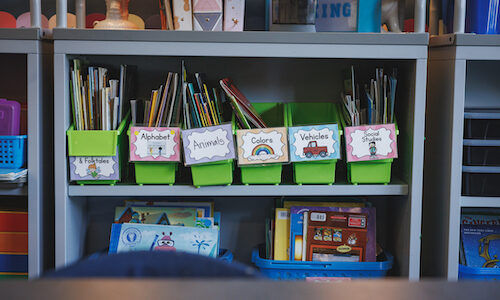
6 strategies for teaching multisyllabic word reading
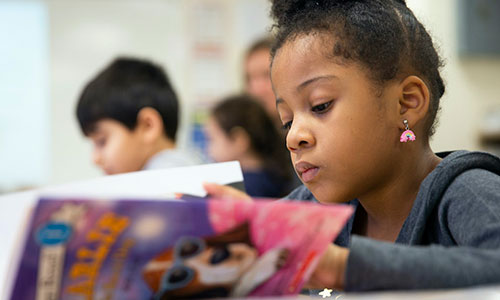
The science of reading explained
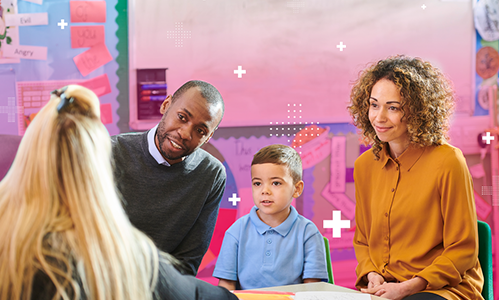
Helping students grow
Students continue to rebound from pandemic school closures. NWEA® and Learning Heroes experts talk about how best to support them here on our blog, Teach. Learn. Grow.
See the post

Put the science of reading into action
The science of reading is not a buzzword. It’s the converging evidence of what matters and what works in literacy instruction. We can help you make it part of your practice.
Get the guide

Support teachers with PL
High-quality professional learning can help teachers feel invested—and supported—in their work.
Read the article
STAY CURRENT by subscribing to our newsletter
You are now signed up to receive our newsletter containing the latest news, blogs, and resources from nwea..

How to teach my child creative writing?
Being able to record ideas, thoughts and feelings gave us more power than any other discovery in the history of mankind. Writing, be it scientific, creative, or recording of events- all are important. But creative writing is a tad more special as it involves the active use of our imagination. Human imagination – without any bounds – has produced all the technological and scientific marvels that we see around us today as very scientific inventions or discoveries that started as a creative idea in someone’s mind.
Importance of creative writing
Creative writing is important for your children- not just for scoring marks, it also helps form different aspects of your child’s personality.
- Helps children improve their imagination
- Helps them better the communication skills
- It helps them to better express themselves
- Lets them understand language and get more knowledge
- Improves their thought process
- Helps develop empathy for others. Creative writing involves thinking from different perspectives and putting yourself in others’ shoes. It will naturally bring about a growth of empathy for people around them.
- Improves problem-solving and pattern analysis skills
- Help boost confidence
- It can act as an outlet for their pent-up emotions and thoughts
- Could turn out to be what they make a career out of
- It can help children get part-time writing jobs
So, how can you help your children with that?
Encourage them to read more.

Writing requires one to know about how language works, how sentences are formed, and how to best describe things, events, or people as required to convey the idea that you have in your mind. The best way to learn and get familiarised with all this is to read as much as you can. get your children to start reading. Gift them books as gifts. Discuss with them about the books they have read and ask them what they have gained from reading them.
Plan what to write
Teach your children how to plan what they are going to write. Just starting to write and noting down things as they come to your mind won’t work for most children. So, teach them to visualise and plan what they are going to write. Form an initial idea and structure of what needs to be written and follow that. It would be a great idea to note down the vital points or ideas you are going to include and arrange them before getting to the actual writing. Organising your thoughts will help you make sure you don’t miss out on anything.
Plan the characters
When you are writing a story, it is vital to plan the characters. Ask your children to think of the personality and characteristics of the characters they are going to write about. List out what makes them stand out. Ask your children to imagine different situations and the actions their characters will take in them. It can help your children gain more understanding of what they are going to write and also be more creative in the process.
Read to them

From a young age itself, read to them. Tell them stories, read poems and riddles to them. All these will help them become more creative and interested in reading and writing. Instil a love for stories and the language in them.
Help them improve their vocabulary
Do exercises at home that help them improve their vocabulary. Buy them a daily vocabulary calendar, play word games, solve crosswords and anything else you can think that will help them. Another good idea is to buy them a small dictionary that they can carry around. Ask them to refer to it any time they happen to come across an unfamiliar word.
Set aside a place for them to write
Arrange a quiet corner in your house where they will be able to practice writing undisturbed. Make sure they have their writing supplies and good lighting set right. Make sure they are not disturbed when they spend time there.
Encourage journaling

Buy your children a journal and ask them to write about their daily life and thoughts. Having a personal journal can help them bring out their thoughts and help them give forms to their ideas better.
Attending workshops
They can be of enormous help to any writer who is starting. Experienced teachers and eminent personalities will share their experiences and teach your children how to improve their writing skills. Choose one which is suited for your child’s age and skill level.
Find them a mentor
It is not essential, but do consider it if your child shows great potential and you think you won’t be able to draw it out fully on your own. A mentor will do more good to your child than hundreds or thousands of hours spent writing on their own.
Supply them with inspiration or writing prompts
Encourage your children to write as much as they can. Give out writing prompts as activities at home so you can nudge them in the right direction.
Children naturally have limitless imagination and insatiable curiosity. What you have to do as parents is to show them how to channelise it in the right way. We hope these pointers help you in bringing out the creative writer in your children. All the best! 🙂
Exam Smart Tips
Exam Smart Tip #1 – How to Encourage Our Kids to Speak Better? Exam Smart Tip #2 – How to avoid carelessness? Exam Smart Tip #3 – Establishing Routines! Exam Smart Tip #4 – Let’s Read Carefully! Exam Smart Tip #5 – Beating the Exam Fever! Exam Smart Tip #6 – How to Eat Right for the Exams? Exam Smart Tip #7 – How to Avoid a Meltdown? Exam Smart Tip #8 – Taking Stress out of Tests

Mission statement – “Empower every student to achieve full potential”
88tuition Pte Ltd offers the best PSLE Tuition Singapore for children looking to ace the PSLE exam. With effective learning materials and high-quality explanatory videos by experienced trainers, children are provided with the best online PSLE tuition .
With the basics learnt well, children will be able to grasp advanced concepts easily. Looking for the best PSLE math tuition , PSLE Science tuition and PSLE English tuition in Singapore ? 88tuition has got you covered. The online training videos and assessments are designed in a way that children are made to enjoy the learning process.
UEN 201817310C
271 Bukit Timah Road; #03-08; Singapore 259708

STEAM for Kids: Creative Writing Workshop For Kids
Kids! Come to the Kingsbridge Library where will will use our imaginations (and maybe some prompts) to write a short narrative story!
- Audience: Children, School Age (5-12 years)

The Writing For Pleasure Centre
– promoting research-informed writing teaching
How we can make writing feel less effortful for children

Motivation in writing isn’t just about valuing one’s own work and experiencing success- it also involves considering the perceived cost and effort too. If writing feels too laborious, children often don’t engage.
Reduce Feelings Of Cost
We must address the balance between motivation and effort in the writing projects we plan. Making our class writing projects feel less daunting can reduce the perceived cost and increase motivation. One way of doing this is to set process goals .
- To learn more – [ Trust The Process – Setting Process Goals ]
Focus On The “Hows”
Writing is inherently effortful, but we can alleviate this by focusing on the “how” of writing—creating an environment where learning to write feels manageable while still challenging students intellectually. One way of doing this is to plan our writing units effectively.
- To learn more – [ The Components Of An Effective Writing Unit ]
Have High Expectations For Writing Instruction
The distinction between the “what” and the “how” of writing lessons allows us to maintain high expectations for content while making the learning process more accessible. The best way of doing this is by using the principles of SRSD instruction.
- To learn more – [ Getting Writing Instruction Right ]
Develop In Children A Writer’s Discipline
Establishing a consistent routine and culture for developing writers within your school is key to reducing the perceived cost of effort and fostering a positive attitude towards writing too.
- To learn more – [ Be Reassuringly Consistent ]
Build A Community Of Writers
By creating an environment where writing feels manageable and rewarding, we empower students to engage with writing enthusiastically and persistently.
- To learn more – [ Build A Community Of Writers ]
Share this:
Discover more from the writing for pleasure centre.
Subscribe now to keep reading and get access to the full archive.
Type your email…
Continue reading

How Minecraft Motivates Kids to Learn, Create & Grow
Lomit Patel
- 10 Popular Minecraft Video Ideas to Skyrocket Your Channel

You’ve seen your kid glued to the screen, lost in the world of Minecraft. But here’s the thing: they’re not just playing a game. Think of how Minecraft motivates kids to advance each day, crafting new paths to follow.
Minecraft is more than just a game. It’s a tool that motivates kids to develop critical skills like problem-solving, project planning, and collaboration. And the best part? The whole experience? A complete joyride for them.
So, let’s dive into the incredible ways in which Minecraft motivates kids
The Educational Power of Minecraft
As a parent, you’ve probably heard your kids talking about Minecraft. But did you know this popular game is more than just a fun pastime? It’s actually a powerful way to motivate kids as an educational tool that can help your child develop critical thinking skills, boost creativity, and even learn project management.
Let’s take a closer look at how Minecraft motivates kids by changing the game regarding learning and problem-solving.
How Minecraft Motivates Kids: Boosting Creative Thinking Through Sandbox Gameplay
One of the things that makes Minecraft so special is its open-ended nature. It’s a “sandbox game,” which means that players have the freedom to explore, create, and innovate within the game world.
Think of it like a digital version of a giant box of LEGOs. Like physical building blocks, the only limit is your child’s imagination. They can build towering skyscrapers, design intricate machines, or even create entire worlds from scratch.
This kind of creative play is more than just fun; it’s actually essential for developing creative thinking skills. By experimenting with different designs and testing out new ideas, your child is learning to think outside the box and develop innovative solutions to problems.
How Minecraft Motivates Kids: Enhancing Critical Thinking with Survival Mode
But Minecraft isn’t just about building. The game also has a “survival mode” that challenges players to gather resources, craft tools, and fend off monsters. It might sound like just another game mechanic, but it’s actually a powerful way to promote critical thinking and problem-solving skills.
In survival mode, players must think strategically about allocating their resources and planning ahead for potential challenges. They might need to build a shelter to protect themselves from monsters or craft weapons to defend against attacks. This kind of strategic planning is a crucial component of critical thinking, and it’s a skill that will serve your child well both in and out of the game.
How Minecraft Motivates Kids: Project Planning and Management in a Virtual World
But the educational benefits of Minecraft don’t stop there. The game also provides a unique opportunity for kids to learn about project planning and management.
Think about it: when your child is working on a big build in Minecraft, they’re not just placing blocks willy-nilly. They’re carefully planning their design, gathering the necessary resources, and managing their time and efforts to bring their vision to life. Sound familiar? That’s because it’s precisely the same process that real-world project managers go through every day.
By playing Minecraft, your child will get hands-on experience with project management concepts like resource allocation, task prioritization, and time management. These skills will serve them well not just in school but also in their future careers.
How Minecraft Motivates Kids in the Classroom
So we’ve seen how Minecraft can be a powerful educational tool at home. But did you know that it’s also making its way into classrooms worldwide?
That’s right – teachers are starting to recognize the potential of Minecraft as a teaching tool, and they’re finding creative ways to integrate it into their lesson plans.
How Minecraft Motivates Kids: Teaching Math and Science Concepts
One of the most exciting ways Minecraft is being used in the classroom is to teach complex subjects like math and science. By using the game’s building mechanics, teachers can create interactive lessons that help students tangibly visualize abstract concepts.
For example, a teacher might use Minecraft to teach students about the properties of different materials by having them build structures out of various block types. They might also create a virtual ecosystem within the game to teach students about food chains and environmental science.
The possibilities are endless; the best part is that students learn while having fun. It’s a win-win.
How Minecraft Motivates Kids: Developing Language Arts Skills
But Minecraft isn’t just for STEM subjects. Minecraft offers narrative elements, making it a great tool for developing language arts skills like storytelling and reading comprehension.
Many teachers use Minecraft as a platform for creative writing projects, encouraging students to craft their own stories and adventures within the game world. Others use the game’s built-in books and signs to create interactive reading experiences that engage students in new and exciting ways.
By leveraging the power of Minecraft’s immersive world, teachers are finding new ways to make language arts come alive for their students.
How Minecraft Motivates Kids: Social Skills Development Through Multiplayer Experiences
One of Minecraft’s most underrated benefits is its potential for social skills development. While the game can certainly be enjoyed solo, it shines in multiplayer mode.
When kids play Minecraft together, they’re not just building and exploring but also learning how to communicate, collaborate, and work as a team. These are essential social skills that will serve them well throughout their lives.
Think about it: when kids are working together on a big project in Minecraft, they have to learn how to divide up tasks, share resources, and communicate effectively to achieve their goals. They’re learning to be leaders and team players while having a blast with their friends.
How Minecraft Motivates Kids: Time Management and Responsibility
Another essential skill that Minecraft can help develop is time management. When kids are engrossed in a big project, they easily lose track of time and spend hours upon hours in the game.
But with a bit of guidance from parents and teachers, Minecraft can be a great tool for teaching kids about responsibility and time management. By setting clear boundaries around game time and encouraging kids to set goals and priorities for their projects, we can help them learn to manage their time effectively both in and out of the game.
Navigating the World of Minecraft Education Edition
If you’re a teacher or parent interested in using Minecraft for educational purposes, you’ll want to check out Minecraft Education Edition. This particular version of the game is designed specifically for classroom use, and it comes packed with features and tools to help teachers integrate Minecraft into their lesson plans.
Global Minecraft Design Competition
One of the most extraordinary things about Minecraft Education Edition is the Global Minecraft Design Competition. This annual event challenges students worldwide to use Minecraft to create innovative solutions to real-world problems.
Past winners have included a group of students who used Minecraft to design a sustainable city and another group who created an interactive game to teach players about the dangers of deforestation. It’s a great way to encourage creativity and problem-solving skills while teaching kids about critical global issues.
Engineering For Kids Within Minecraft
Another great feature of Minecraft Education Edition is its focus on engineering and design. The game includes a variety of challenges and activities that teach kids about engineering concepts like circuitry, Redstone, and even coding.
By completing these challenges, kids can learn about the design process and develop their problem-solving skills in a fun and engaging way. Who knows – they might even discover a passion for engineering that leads to a future career.
Real-World Skills Gained from Playing Minecraft
So far, we’ve discussed the educational benefits of Minecraft within the game itself. But the truth is that the skills that kids develop while playing Minecraft can also translate to the real world in some pretty amazing ways.
From Building Blocks to Project Managers
Remember how we discussed Minecraft being a great tool for teaching project management skills? Well, those skills don’t just stay in the game – they can also be applied to real-life projects and challenges.
Think about it: when kids work on a big build in Minecraft, they learn how to break down a complex project into smaller, manageable tasks. They’re learning to allocate resources, manage their time, and communicate effectively with their team members. These are all skills essential for success in the real world, whether working on a school project or managing a team at work.
Learning Energy Systems Through Gameplay
Another cool way that Minecraft can teach real-world skills is through its energy systems. In the game, players can create complex machines and systems that generate and use energy in various ways.
By experimenting with these systems, kids can learn about real-world concepts like renewable energy, efficiency, and sustainability. They might even be inspired to pursue careers in fields like engineering or environmental science.
Creative Expression and Custom Mods
One of the things that makes Minecraft so unique is its incredible flexibility. With the help of custom mods, players can create their own unique game version that is tailored to their interests and playstyle.
For kids, this is an amazing opportunity for creative expression. They can design their textures, create custom items and blocks, and even program their mini-games and challenges within Minecraft. It’s like having a digital sandbox where they can let their imaginations run wild.
But custom mods aren’t just about fun and games – they can also be an excellent way for kids to develop their coding and programming skills. By tinkering with the game’s code and creating their mods, kids can learn the basics of programming languages like Java and Python in a fun and engaging way.
Why Kids Love Minecraft – And Parents Should Too
At the end of the day, the reason why Minecraft video games are so popular with kids is simple: it’s just plain fun to develop a growth mindset. Minecraft teaches endless possibilities, and its open-ended gameplay makes it an absolute blast to play, whether you’re building a massive castle or exploring a hidden cave system.
But as we’ve seen throughout this post, a Minecraft game is so much more than just a game. It’s a powerful educational tool that can help kids master a wide range of soft skills and knowledge, from math and science to social skills, creative expression, and coding fundamentals.
Minecraft Motivates Beyond the Game
Perhaps the most fantastic thing about Minecraft is how it can inspire kids to learn and explore beyond the game itself. I’ve seen firsthand how Minecraft can spark a love of learning in even the most reluctant students.
Kids who struggle with traditional classroom learning often thrive in Minecraft, where they can learn at their own pace and in their own way. And once they’ve caught the learning bug, there’s no telling where it might take them – from coding and engineering to history and language arts, the possibilities are endless.
So if your kid is begging you to let them play Minecraft, don’t dismiss it as another video game. Embrace it as the incredible educational opportunity it is – and who knows, you might learn a thing or two yourself.
If you’re looking at what gets children pumped to learn more, look no further than the world of Minecraft. So, consider this not only about creating structures or facing adversaries. Here’s the deal – we focus on building practical skills perfect for thriving outside of your digital hangouts, too.
While classic education methods have their place, introducing a kid to Minecraft could open doors to innovative thinking and sharpened problem-solving skills that textbooks alone might not unlock. Minecraft is hitting it big not just for fun, but because parents and teachers see how it’s making kids sharper in social skills and ace time managers.
So, the next time you see your kid lost in Minecraft, remember – they’re not just playing a game. Block by magical block, their dreams get more significant as the road ahead gets brighter.
About Lomit Patel
Related articles.

NEW Minecraft Coding eBooks!

Featured Coding Cup Winner: Anderson Wants To Be a Computer Programmer!

BYJU’S Coding Cup Competition Prizes!

A Guide to Learning Programming from the Living Room
My coding path.
Take your child from novice to expert. Just follow the path.
Block Coding Courses
Apply your coding skills! Find your passion!
Other Advanced Tynker Courses
Graduate to Python and other text coding languages with Tynker’s advanced elective courses.
- Math for Kids
- Parenting Resources
- ELA for Kids
- Teaching Resources

How to Teach Number Formation in 5 Easy Steps
13 Best Resources for Math Videos for Kids: Math Made Fun
How to Teach Skip Counting to Kids in 9 Easy Steps
10 Best Math Intervention Strategies for Struggling Students
How to Teach Division to Kids in 11 Easy Steps
How to Cope With Test Anxiety in 12 Easy Ways
Developmental Milestones for 4 Year Olds: The Ultimate Guide
Simple & Stress-Free After School Schedule for Kids of All Ages
When Do Kids Start Preschool: Age & Readiness Skills
Kindergarten Readiness Checklist: A Guide for Parents
How to Teach Letter Formtaion to Kids in 9 Easy Steps
15 Best Literacy Activities for Preschoolers in 2024
12 Best Poems About Teachers Who Change Lives
6 Effective Ways to Improve Writing Skills
40 Four Letter Words That Start With A
13 Best Online Teaching Tips for Teachers
How to Teach Kids to Write in 9 Easy Steps
13 Challenges for Teachers and How to Address Them
12 Best Qualities of a Good Teacher
15 Best Innovative Tech Tools for Teachers

What is Number Formation?
Why is number formation important, how to teach number formation to kids, 5 ways to teach number formation.
Have you ever sat down with your child, pencil in hand, and found yourself at a loss for how to teach them to write numbers? It’s a common challenge for many parents and educators. Teaching number formation goes beyond just writing; it’s about understanding and recognizing numbers too. If you’re looking for steps on how to teach number formation to kids , you’re in the right place. Let’s explore some simple strategies to make learning numbers easy and fun for your little ones.
SplashLearn: Most Comprehensive Learning Program for PreK-5

SplashLearn inspires lifelong curiosity with its game-based PreK-5 learning program loved by over 40 million children. With over 4,000 fun games and activities, it’s the perfect balance of learning and play for your little one.
Number formation is all about learning to recognize numbers, understand what they mean, and how to write them down correctly. It’s a basic skill that involves seeing a number, knowing its name, and the order it comes in, as well as being able to draw it on paper the right way around.
Teaching number formation is crucial because:
- It’s the first step in learning writing numbers, which is essential for all math skills.
- When kids learn to write numbers, they find it easier to count things, which is a basic math skill.
- Knowing how to write numbers correctly helps kids with adding and taking away things, making math lessons smoother.
- It also helps children understand number concepts like what’s more and what’s less, as they can see and use numbers in real situations.
1. Number Recognition
Number recognition is when kids learn to see a number and name it correctly. It’s a basic skill that comes before teaching to write numbers.
When to start?
Start early, as soon as your child shows interest in numbers, often around the age of two or three.
Activities:
- Engaging Online Games: There are plenty of kid-friendly number sense games that make learning numbers fun. Look for ones that match your child’s age and interest.
Begin here:

- Flashcards: Simple flashcards with numbers on them can be a great tool. Show them to your child, say the number out loud, and have them repeat it.
- Numbers in Everyday Activities: Incorporate numbers into daily life. Count steps, toys, or anything around you with your child.
Milestones:
- Recognizing numbers 1-10: Children start by getting familiar with numbers 1 through 10, being able to point them out and name them.
- Beyond 10: Gradually, introduce higher numbers as they become comfortable with the first ten.
2. Understanding Concepts
Understanding concepts means kids learn what numbers actually represent, like how many items a number stands for. It’s about realizing that numbers are not just symbols but have real meaning connected to them.
This should begin as soon as children are comfortable recognizing numbers, usually around age 3 to 4.
- Counting Objects: Use everyday items like fruits, toys, or blocks for counting activities . Ask your child to count them with you. You could also engage your kids in online counting games for better retention.
Begin with these games:

- Comparing Quantities: Introduce concepts of ‘more’ and ‘less’ by comparing groups of items. For example, place 3 apples on one side and 5 on the other, and ask which side has more or less.
Begin with these activities:

- Sorting and Grouping: Have your child sort objects by color, size, or type, then count how many are in each group. This helps them understand classification and quantities .

- Understanding Quantities: Children start to grasp that the number ‘2’ means two items, ‘3’ means three items, and so on.
- Recognizing More and Less: Kids begin to understand which quantities are larger or smaller by comparing two sets of objects.
- Basic Addition and Subtraction : With a grasp on quantities, children can start simple adding and taking away, using objects to help understand these concepts.
3. Tracing Numbers
Tracing numbers involves guiding a child’s hand to follow the shape of numbers. It’s a tactile way to learn how numbers look and feel, helping with memorization and writing skills.
You can introduce tracing after a child shows comfort with recognizing numbers and understanding basic concepts, typically around 4 years of age.
Begin with these number tracing worksheets:
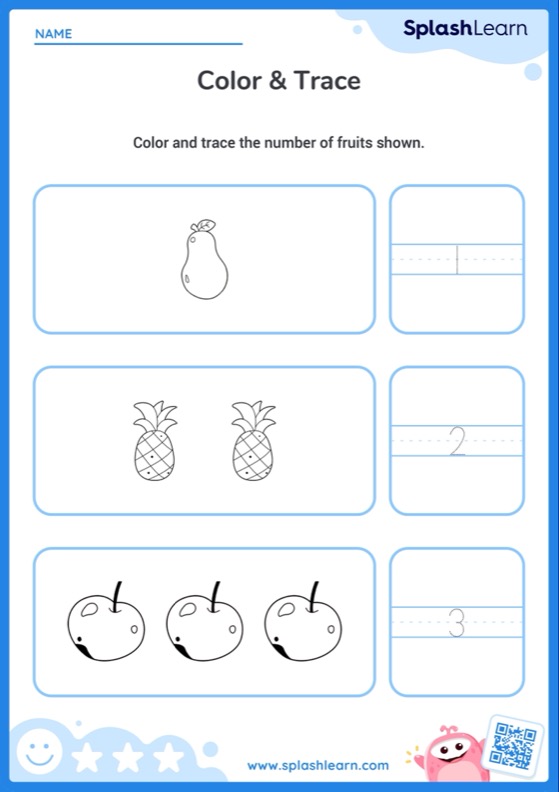
- Recognizing Number Shapes: Children can identify numbers not just by seeing them but also by their shape as they trace them.
- Following Patterns: Kids learn to follow the specific patterns and strokes of each number, understanding the correct way to form them.
- Gaining Control: As children practice, their hand control and coordination improve, allowing for neater and more accurate number tracing.
4. Writing Numbers with Guidance

Writing numbers with guidance involves an adult helping a child to write numbers through direct support, like guiding their hand with your own. This method teaches correct number formation and builds confidence.
Begin this practice after children are comfortable with tracing numbers, usually around 4 to 5 years old.
- Hand-Over-Hand Guidance: Place your hand over the child’s hand and guide it to form numbers. This gives them a feel for the motion and shape of each number.
- Dot-to-Dot or Dashed Lines: Use worksheets where numbers are represented as dots or dashed lines. Children can connect these to form numbers, with your guidance to help them understand the direction and shape.
Role of Adult Supervision:
- Ensuring that children form numbers correctly, preventing the formation of bad habits.
- Providing immediate feedback and encouragement, which is crucial for learning.
- Adjusting the level of support based on the child’s comfort and skill level, gradually reducing assistance as the child becomes more confident.
- Decreased Need for Guidance: Over time, kids need less hand-over-hand help, showing increased confidence and skill in number formation.
- Mastering Number Formation: Children begin to form numbers correctly with adult assistance, learning the specific strokes and shapes.
- Recognition of Errors: They start recognizing when a number doesn’t look quite right, indicating a growing understanding of correct number shapes.
5. Independent Writing
Independent writing encourages children to write numbers on their own, relying on their memory and skills developed from previous guided practice.
This can gradually be introduced as children show signs of readiness, often by the age of 5 to 6, after they are comfortable with guided writing.
- Use games and creative activities, like drawing numbers to create a picture, to make practice fun.
- Incorporate number writing into daily activities, like asking them to write the number of items on a grocery list.
- The ability to write numbers unaided, relying on memory and skills developed from guided practice.
- Numbers are written consistently and legibly, showing a firm grasp of each number’s proper formation.
- Children show more confidence in their skills, willing to try writing numbers and engaging with numeric content more independently.
1. Number Formation Worksheets
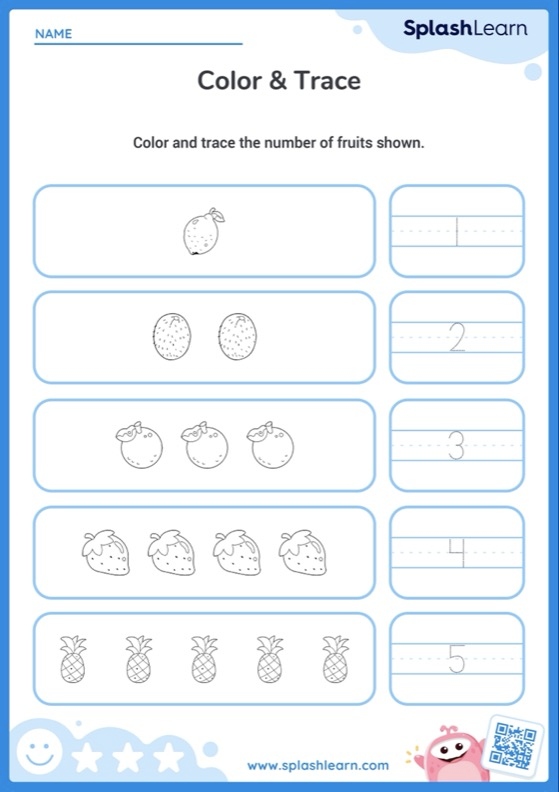
Number formation worksheets are designed with numbers that are either dotted or outlined in dashed lines. Kids use a pencil or marker to trace over these guides, practicing how to write each number correctly. Start with simple numbers and gradually move to more complex ones as their confidence grows.
2. Sand or Salt Tracing Tray
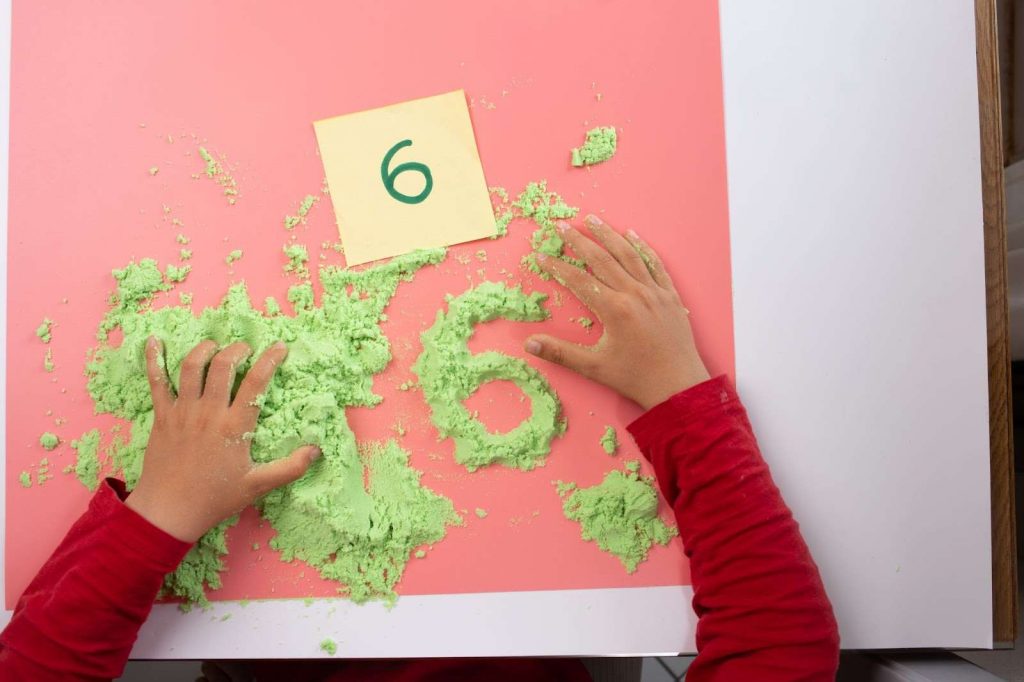
A shallow tray filled with sand or salt becomes an engaging space for kids to practice formation of numbers. They use their fingers or a stick to draw numbers in the sand or salt. After each number, they can smooth over the surface and start again, making it a reusable resource for practice.
Writing in sand or salt is a tactile experience that engages children’s senses, making learning more memorable. The physical act of forming numbers in a material helps solidify their shapes in a child’s mind, combining the fun of a sensory activity with educational value.
3. Online Educational Games
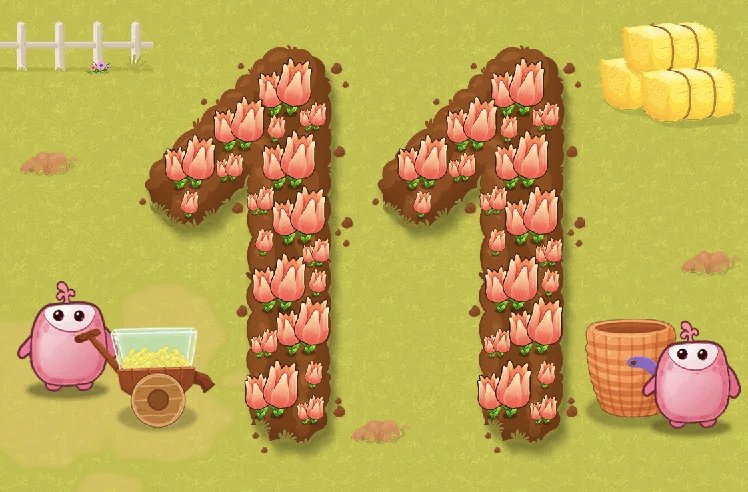
Online educational games designed for children can make learning how to form numbers an interactive and enjoyable experience. These games use colorful animations and engaging challenges to teach kids number formation and recognition.
4. DIY Number Cards with Textured Numbers
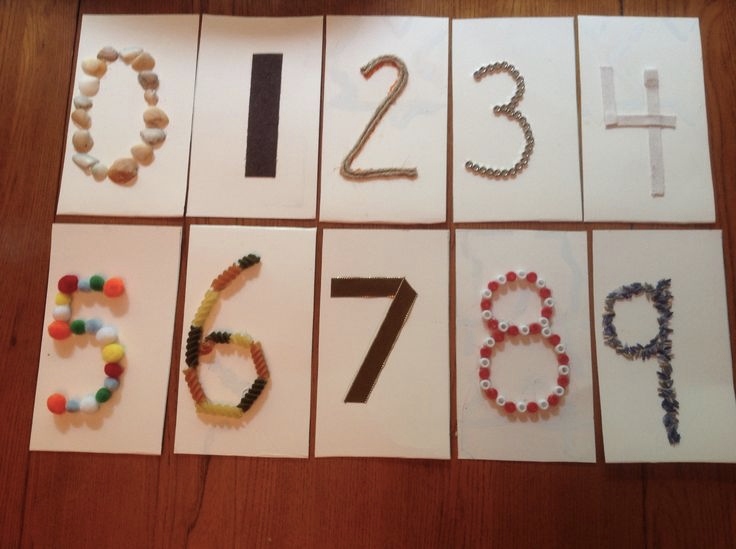
Creating your own number cards with textures provides a hands-on way for kids to learn formation of numbers. Use materials like sandpaper or thick glue to create numbers with texture on cardstock or heavy paper. Once dry, these cards can be used by children to trace the numbers with their fingers. This DIY activity not only allows for customized learning tools but also involves children in the creation process, making the learning materials more meaningful to them.
5. Number Formation with Playdough
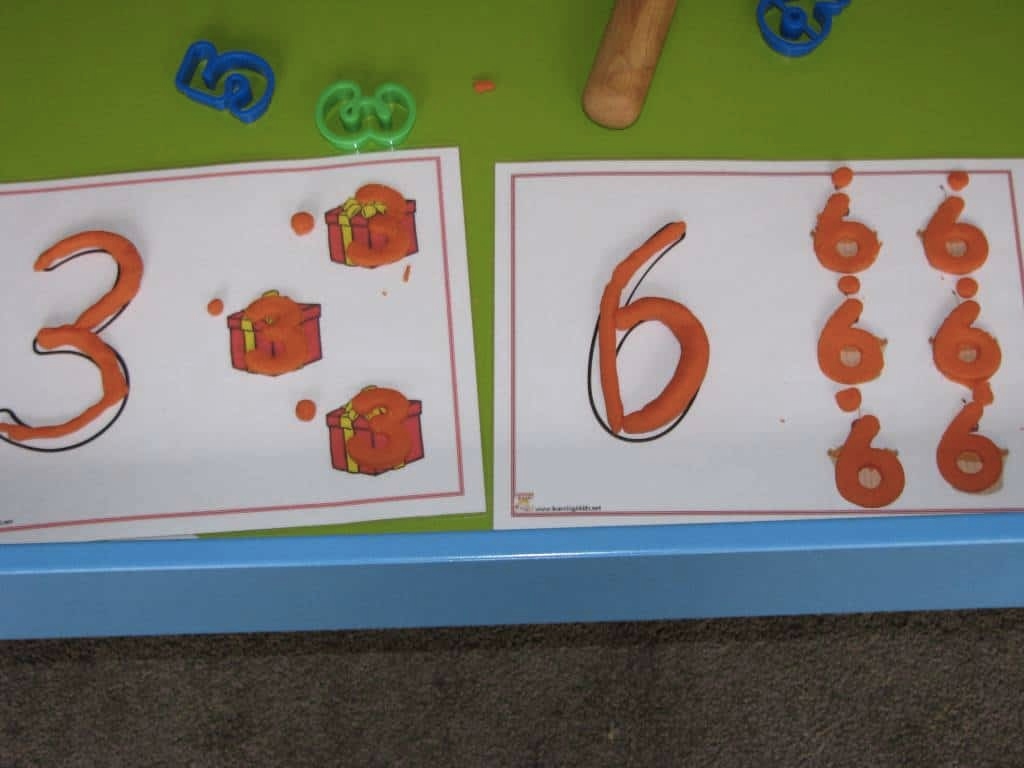
Using playdough for number formation is a creative and tactile way to teach number formation to children. Start by providing your child with a lump of playdough and demonstrate how to roll it into long, snake-like shapes. Then, guide them in bending and shaping these “snakes” to form different numbers.
This hands-on activity not only teaches them how to create numbers but also allows them to correct and adjust as they go, reinforcing their understanding of each number’s shape.
Teaching number formation is a journey filled with small steps and big milestones. Remember, patience and consistency are key. Keep practices engaging, mix up activities to suit your child’s interests, and celebrate their progress, no matter how small. With time and encouragement, your child will master the formation of numbers, laying a solid foundation for their future math adventures.
Frequently Asked Questions (FAQs)
At what age should children start learning number formation.
Children can start learning forming numbers as early as age 3 to 4, beginning with basic number recognition and gradually moving to more complex activities as they grow.
Why are sensory activities important in learning number formation?
Sensory activities like tracing in sand or forming numbers with playdough enhance learning by engaging multiple senses, which helps children memorize and understand number shapes more effectively.
Most Popular

15 Best Report Card Comments Samples

101 Best Riddles for Kids (With Explanation)

40 Best Good Vibes Quotes to Brighten Your Day
Recent posts.

What is Classical Homeschooling: A Comprehensive Guide

Math & ELA | PreK To Grade 5
Kids see fun., you see real learning outcomes..
Watch your kids fall in love with math & reading through our scientifically designed curriculum.
Parents, try for free Teachers, use for free

- Games for Kids
- Worksheets for Kids
- Math Worksheets
- ELA Worksheets
- Math Vocabulary
- Number Games
- Addition Games
- Subtraction Games
- Multiplication Games
- Division Games
- Addition Worksheets
- Subtraction Worksheets
- Multiplication Worksheets
- Division Worksheets
- Times Tables Worksheets
- Reading Games
- Writing Games
- Phonics Games
- Sight Words Games
- Letter Tracing Games
- Reading Worksheets
- Writing Worksheets
- Phonics Worksheets
- Sight Words Worksheets
- Letter Tracing Worksheets
- Prime Number
- Order of Operations
- Long multiplication
- Place value
- Parallelogram
- SplashLearn Success Stories
- SplashLearn Apps
- [email protected]
© Copyright - SplashLearn

Make study-time fun with 14,000+ games & activities, 450+ lesson plans, and more—free forever.
Parents, Try for Free Teachers, Use for Free

COMMENTS
We've outlined a seven-step method that will scaffold your students through each phase of the creative process from idea generation through to final edits. 7. Create inspiring and original prompts. Use the following formats to generate prompts that get students inspired: personal memories ("Write about a person who taught you an important ...
Teaching Creative Writing. Creative writing plays an important role in a child's literacy development. This article makes suggestions for the instruction and evaluation of children's stories. Most children enter school with a natural interest in writing, an inherent need to express themselves in words (Graves, 1983).
Story language. Ask your child to think of some fabulous words to use in their story writing. They might be long words or simple ones, or they might be great descriptive words or words that help create pace and tension. Encourage them to jot these down and refer to the list as they write their story.
X Research source. 2. Provide your students with a large number of resources. One of the best ways to teach and promote creative writing is to make sure your students have the resources to write. Such resources include both creative resources and material resources to actually write.
Creative writing fosters creativity and imagination. It encourages you to think outside the box, broaden your perspective, and explore new ideas. It also enhances your ability to communicate effectively, as it involves conveying thoughts, emotions, and narratives in a clear and compelling manner. 2.
Teach students to treat self-editing as a separate stage in the writing process. get students reading in the genre they'll be writing; e.g., if they're writing poetry, encourage them to read a lot of poems. help students learn to trust their own perspectives and observations, to believe that they have something interesting to say.
Hopefully, they will tell you they want to know what they look like in the mirror right now. Then you can have students think of 5 possible situations for what happened and how they look. 3. Do a 5 Minute "Free Write Brain Dump". During the next step of a creative writing lesson plan, encourage students to do a brain dump in their writing ...
Creative writing should be fun, and playing games is good way to help students develop story ideas. Try an alternative word association game in which you think of words that are at odds with each ...
Teaching Creative Writing Tip #3: Make Sure Your Materials are Age-Appropriate. Once you know what you're teaching, you can begin to cultivate the actual lessons you'll present. If you pick up a book on teaching creative writing or do a quick Google search, you'll see tons of creative writing resources out there for young children. You ...
Each student first shared their painting with the class and then wrote, "What I see in the painting," at the top of a sheet of paper. Next, I had the students use simple sentences to list what they saw in their picture. I walked around the room helping them to grow their sentences. Sentences such as "I see a cloud " became "I see a ...
6 Ways to Teach Writing reatively Teach your students the fun aspects of writing. Students of all ages write short stories and papers, from younger elementary-school writers through college-age students.
4. Writing practice for preschoolers and kindergarten kids. If your child is new to writing, start with beginner skills like pencil grip practice and tracing the letters of the alphabet. Show your child how to hold a pencil with three fingers, in a tripod grip. This will give them more control when they write.
2. Use interesting writing prompts to foster creativity. One of the best ways to encourage creative writing in kids is to give them fun, off-the-wall writing prompts to inspire them. By providing a specific topic or challenge, writing prompts can help kids break out of their comfort zones and explore new ideas.
Writing. Mary Amato's Tips for Parents: How to Encourage Creative Writing. Create a time and place for writing. Children will want to write if you make it a fun activity to do together. "Let's write a story!". Accept your child's ideas. Your child may create a character/story you don't like.
Paul G Moss is an experienced Pedagogical Practitioner who has a wealth of knowledge and strategies when it comes to teaching creative writing to children.Here he gives us an insight into some of the creative writing ideas and techniques we can use to encourage reluctant writers. "Teaching creative writing can at times be incredibly difficult, but the most frustrating I think is when students ...
Do you struggle with getting your kids to write? This video is a step by step guideline on how to write creatively. 🌞Facebook https://www.facebook.com/group...
Give the characters personalities, traits, and quirks that will make them stand out. Make a plot: Craft an exciting and engaging storyline that includes a beginning, a middle, and an end. Use the question and topic as a starting point. Decide how your protagonist will overcome their conflict, and develop the story from there.
This course is designed for teaching children creative writing in a heart-centred way. The principles of the classes can be applied to large groups, small groups or individual children. They contain age appropriate exercises - covering topics such as character, dialogue, journaling and nature writing. They also offer inspiring quotes and ...
Here are 9 ways to make creative writing skills fun: 1. Read Often. Books are the best precursor to writing. So get your kids reading! With repeated exposure to words, ideas, and styles, and in books, kids build the ability to mimic and adopt them. Flood them with exposure to books and watch their skills rise.
Writing offers children a unique outlet to explore their creativity and imagination. By learning to write stories, poems, or even journal entries, kids can develop their creative talents and discover new ways of seeing the world. The process of writing involves complex thinking skills such as planning, organizing, and problem-solving.
Create Story Prompts. A fun way to improve kids' creative writing skills is to have them write short stories. Cut out pictures from a magazine with different characters or locations, or write down different words. Place these in a container or glue them to cards to use as writing prompts for creating a unique story.
4. Help your child keep a dream journal. A dream journal is a great way to help your child record dreams and write them down before they forget. They can decorate and personalize their own dream journal and fill it with words and pictures. 5. Provide other tools for creative expression. Sometimes writing isn't the easiest option for your child ...
Use games. There are numerous games and puzzles that help children with spelling while increasing their vocabulary. Some of these may include crossword puzzles, word games, anagrams, and cryptograms designed especially for children. Flash cards are fun to use too, and they're easy to make at home. Turn your child's writing into books.
Lesson #1: Writing instruction begins with a shared language for talking about writing and a shared understanding of the purposes for writing. Anchoring your instruction in a few big ideas that students can remember helps simplify the experience for everyone—and writing is always an experience. As a new English language arts teacher, I often ...
Creative writing involves thinking from different perspectives and putting yourself in others' shoes. It will naturally bring about a growth of empathy for people around them. Improves problem-solving and pattern analysis skills. Help boost confidence. It can act as an outlet for their pent-up emotions and thoughts.
Kids! Come to the Kingsbridge Library where will will use our imaginations (and maybe some prompts) to write a short narrative story! ... STEAM for Kids: Creative Writing Workshop For Kids. Date and Time. Wednesday, April 24, 2024, 3:30 - 4:30 PM. End times are approximate. Events may end early or late. ... Audience: Children, School Age (5-12 ...
Reduce Feelings Of Cost. We must address the balance between motivation and effort in the writing projects we plan. Making our class writing projects feel less daunting can reduce the perceived cost and increase motivation. One way of doing this is to set process goals. To learn more - [ Trust The Process - Setting Process Goals] Focus On ...
How Minecraft Motivates Kids: Boosting Creative Thinking Through Sandbox Gameplay. One of the things that makes Minecraft so special is its open-ended nature. It's a "sandbox game," which means that players have the freedom to explore, create, and innovate within the game world. Think of it like a digital version of a giant box of LEGOs.
Explore the BBC. The UK's biggest children's short story writing competition, 500 Words, is back at the BBC and we need your help!
Count steps, toys, or anything around you with your child. Milestones: Recognizing numbers 1-10: Children start by getting familiar with numbers 1 through 10, being able to point them out and name them. Beyond 10: Gradually, introduce higher numbers as they become comfortable with the first ten. 2.